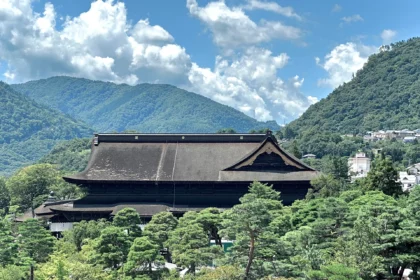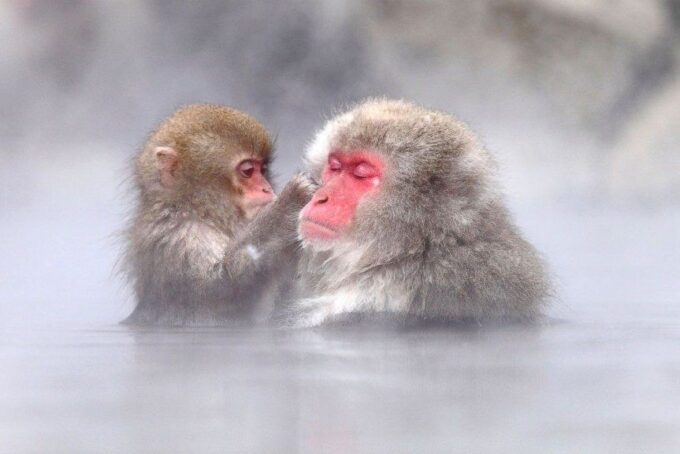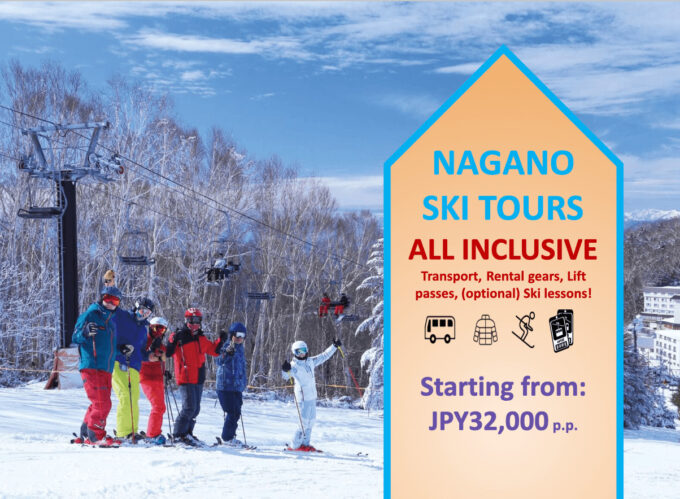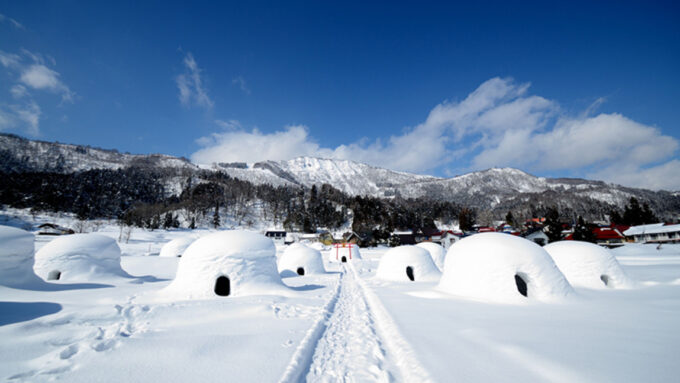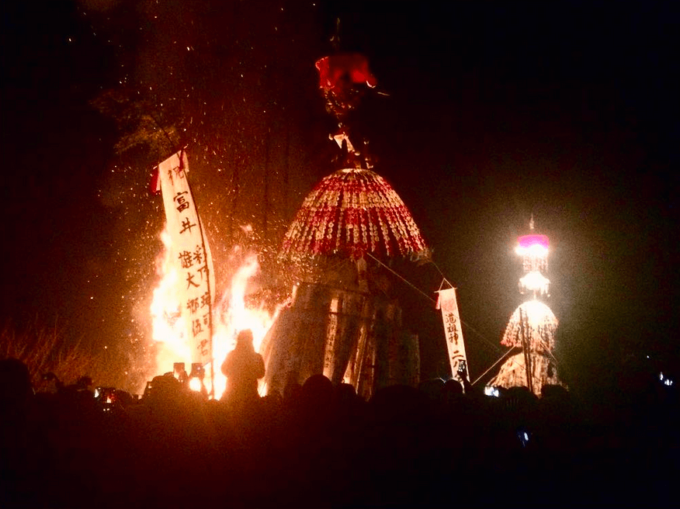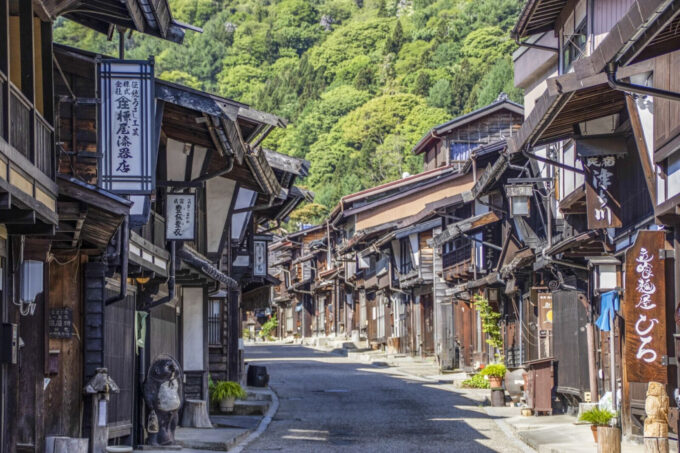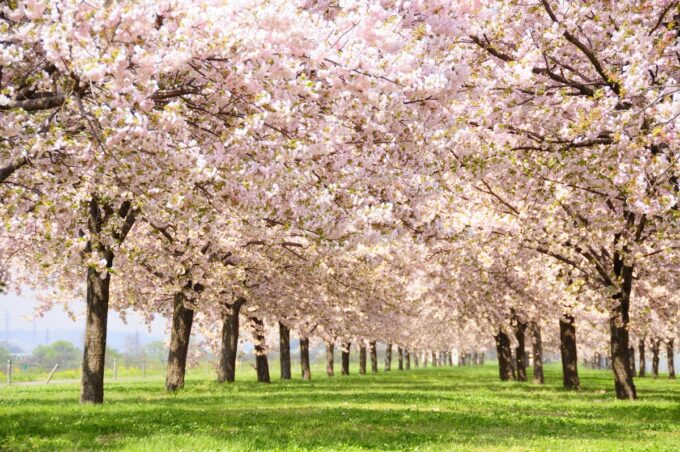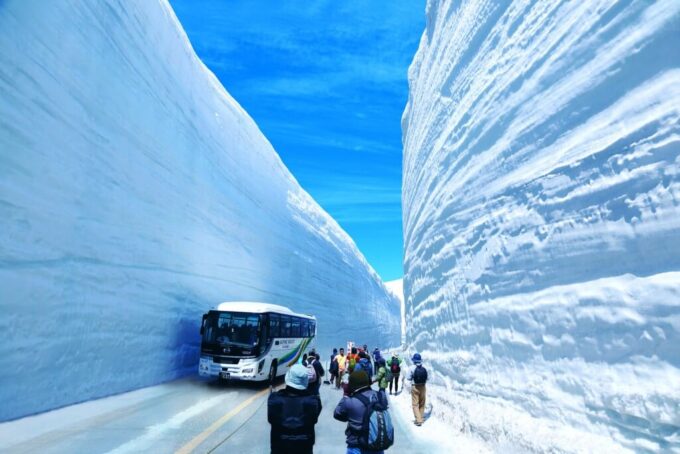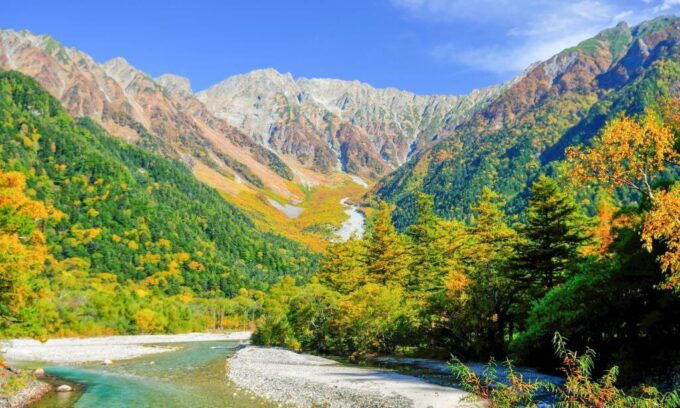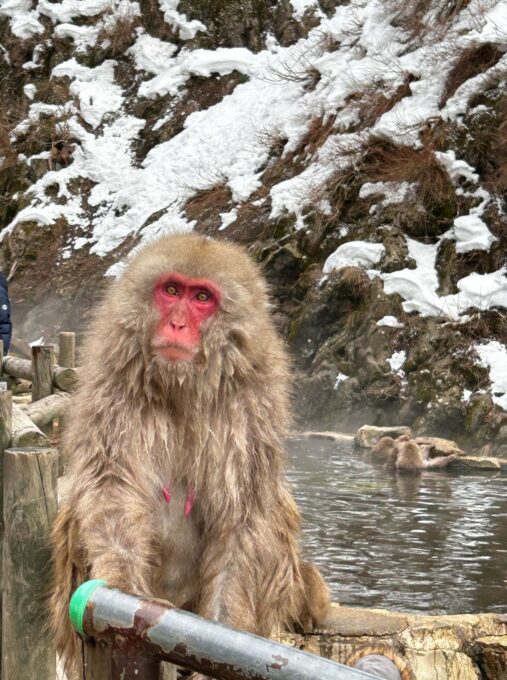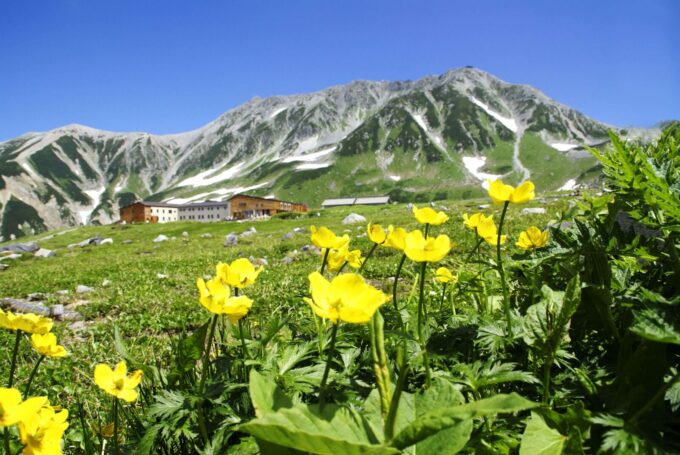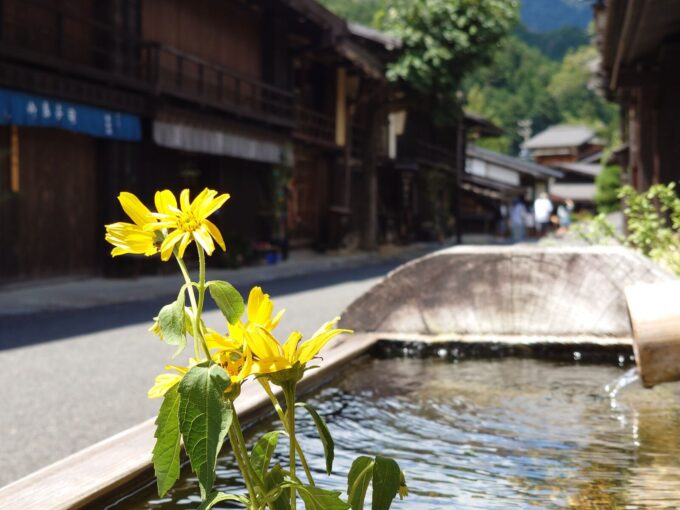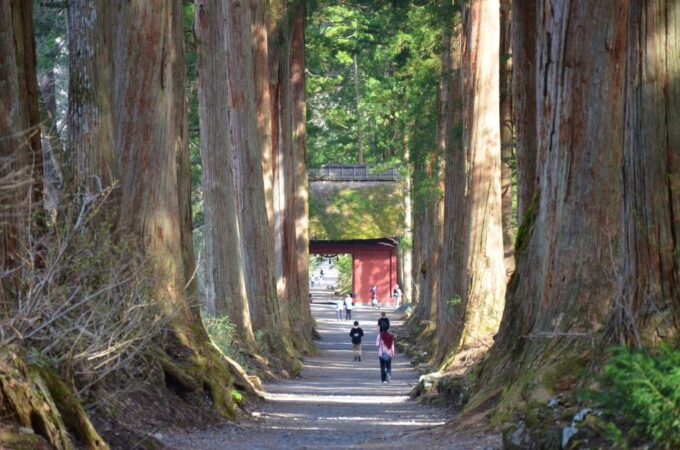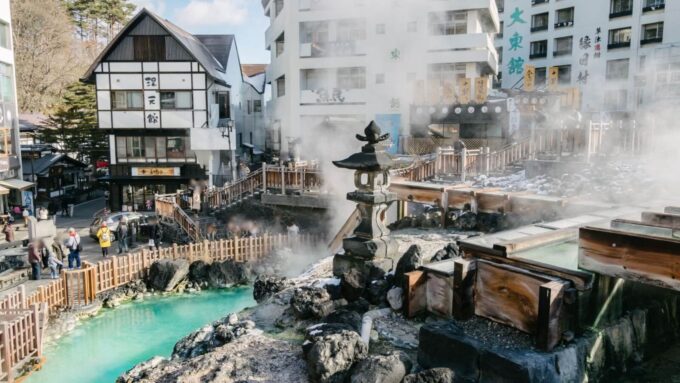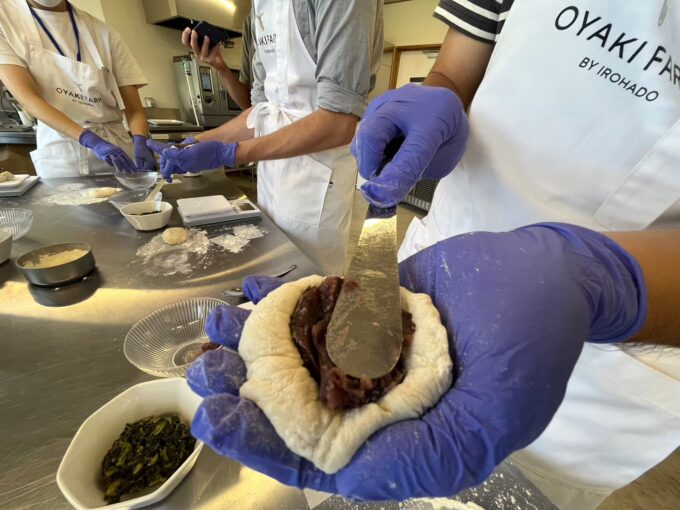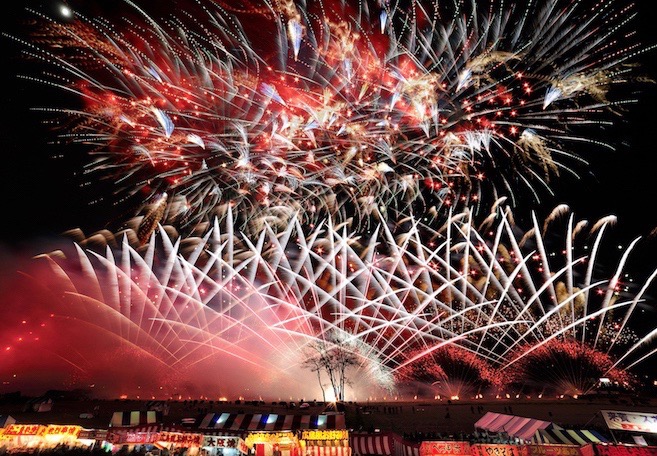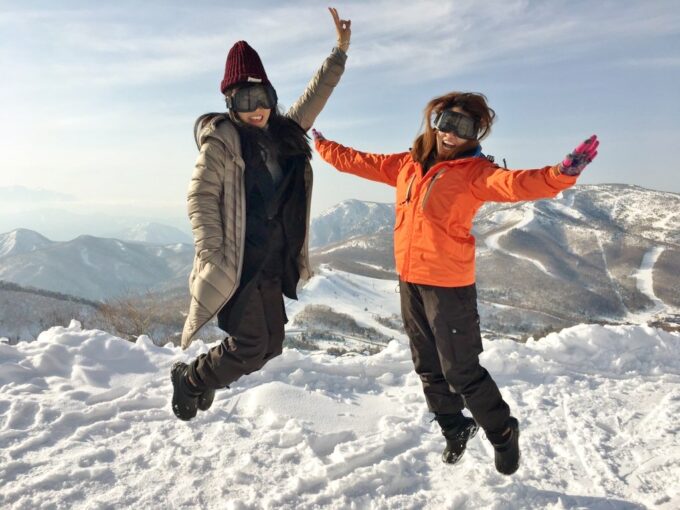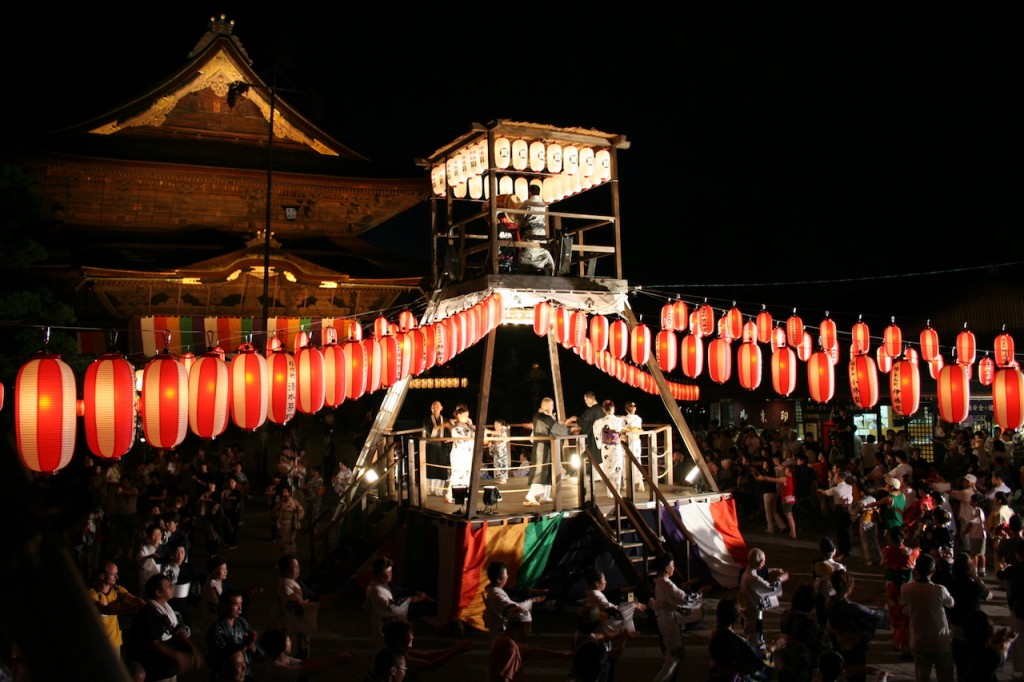
Nagano is a large and varied region offering a busy calendar of events, festivals and seasonal activities. From visiting the snow monkeys and enjoying the best of Nagano's world-class skiing and snowboarding, to raucous samurai festivals, fireworks and the beauty of the spring blossoms and autumn leaves, there's never a bad time to visit Nagano. On this page you will find the following information:
-- Where is Nagano Prefecture?
-- 30 Best Festivals & Seasonal Events
-- Best Places to Stay in Nagano
-- Tours & Charters Around Nagano
Lying in the center of Honshu, Japan’s largest island, Nagano is the country’s fourth largest prefecture. Completely landlocked, Nagano is known for its mountains, natural landscapes, livability, abundant farmlands and of course, the deep snow of winter, its ski resorts and famous monkeys. Nagano is a place of four seasons with each offering its own reasons to visit. On this page you'll find our recommendation of the best events, festivals and seasonal activities in Nagano. A list that is by no means exhaustive but instead just a taster on what's on offer here trough winter, spring, summer and autumn.
WHERE IS NAGANO PREFECTURE?
Located in the exact middle of Japan, Nagano is one of the largest prefectures in Japan and one of the few which is landlocked. Composed mostly of mountains with only a few small areas of flat land, each region of Nagano has a distinct culture with various local foods, attractions, and historical sites. Stretching almost from coast to coast, and taking at least 3+ hours to drive across on the expressway, some parts of Nagano may be hard to access but in general it has good connections to several major cities, with multiple options for direct train access from Tokyo and Nagano, as well as Kanazawa. Also boasting some of Japan's tallest mountains and best alpine scenery, Nagano is a great place to go to escape from the city without needing to spend too much time on transport.
30 BEST EVENTS, FESTIVALS & SEASONAL ACTIVITIES
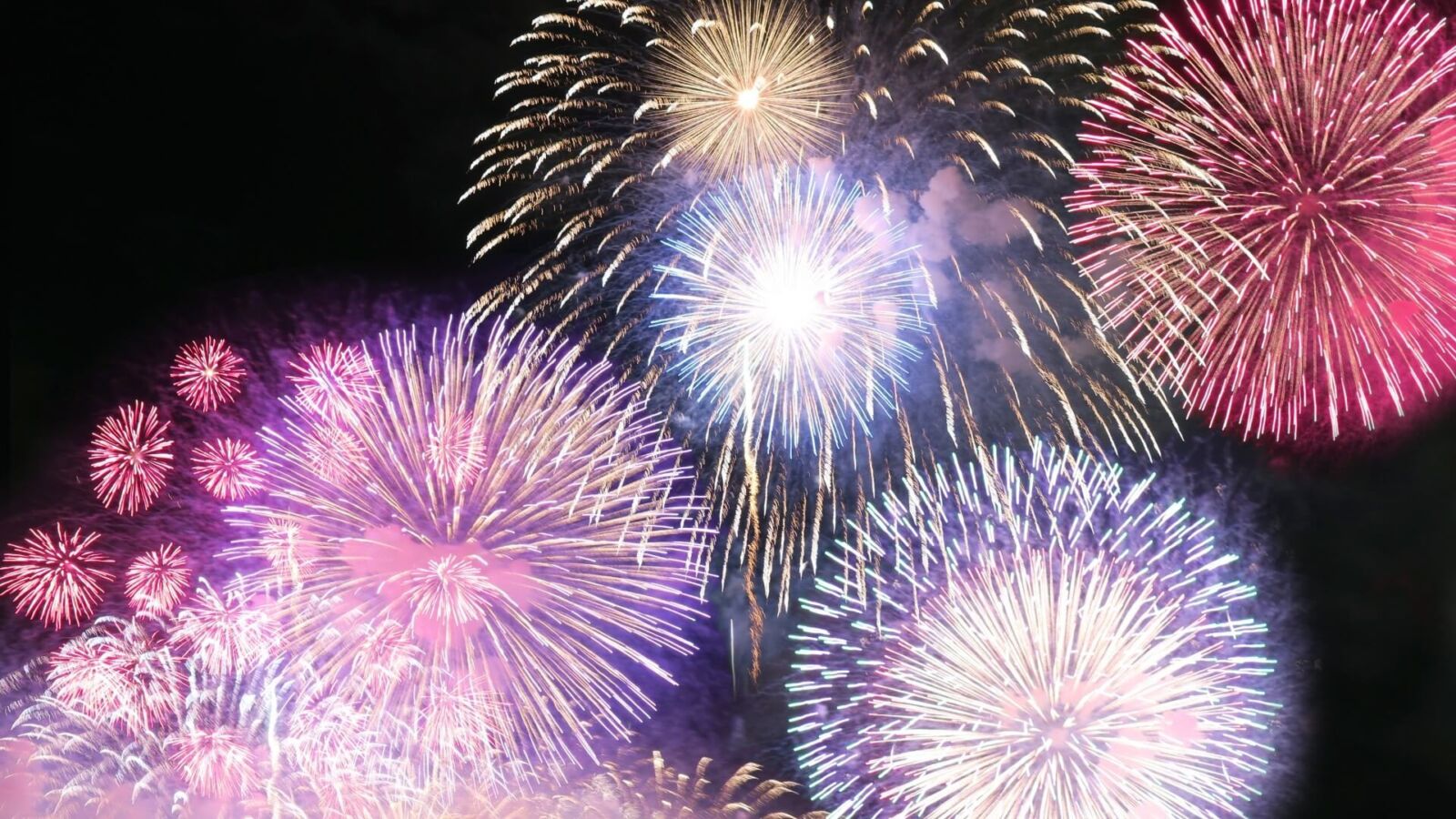
Best-known for its winters, any list of the best events, festivals and seasonal activities in Nagano has to start with the snow of the monkey park and the region’s world-class ski resort. From there we’ll move into the warmer months of the year. A time of festivals and fireworks, spring and summer are a great time of year to head back into the mountains to enjoy some of Japan’s best hiking and outdoor experiences. Autumn brings the beauty of the leaves, the enticement of hot springs and more before the first snow of winter falls and we start it all again. Here’s our recommendation of the best things on offer in Nagano:
JANUARY
The Snow Monkeys of Jigokudani
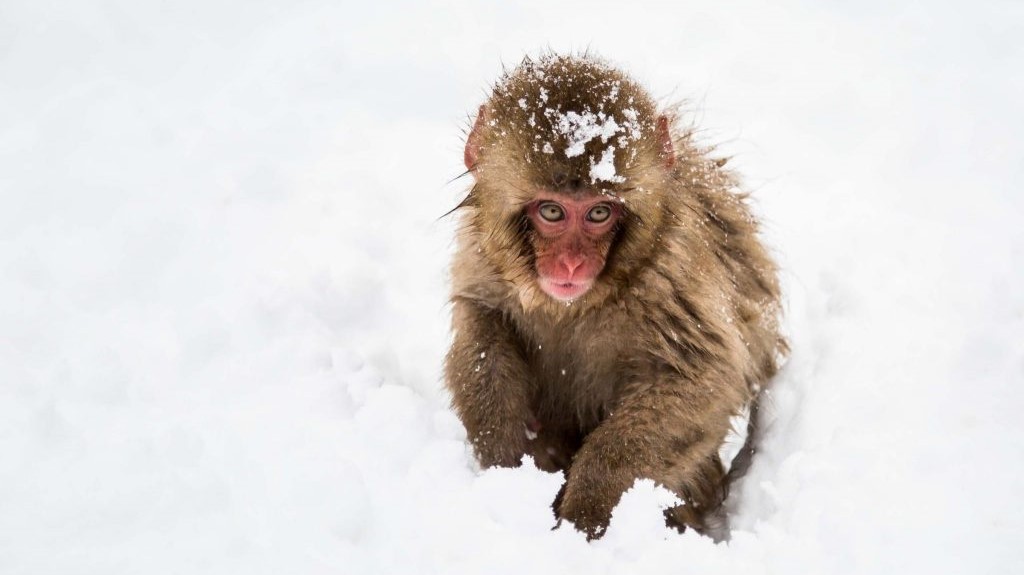
Located under an hour from Nagano City, the Jigokudani Monkey Park is home to Nagano’s most famous furry residents. While the monkeys come to the park all year round, they are of course most famous for their antics in the deep snow and cold of winter. The first snow will likely fall in and around the park in December with January and February then bringing the heaviest snowfall. Easy to reach from Nagano City by express bus, train followed by local bus or on one of our tours, any visit to Nagano in winter starts with a trip to its famous hot spring-loving monkeys.
World-Class Skiing & Snowboarding
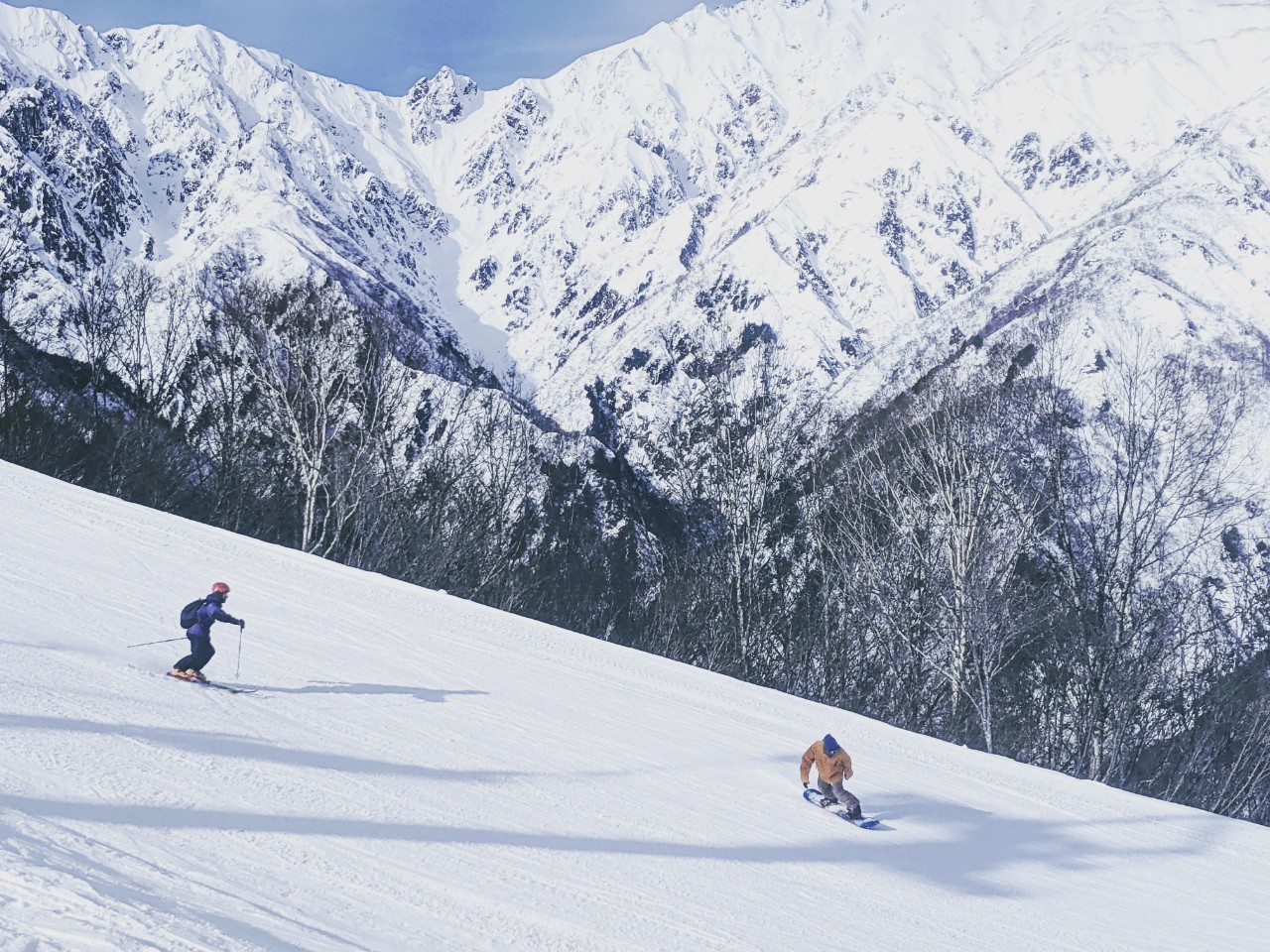
Nagano is home the largest number of ski resorts of any region of Japan including Shiga Kogen – Japan’s largest and highest ski resort – along with the always popular resorts of Nozawa Onsen, Madarao, Hakuba Valley and many others! The resorts open in December and much like the money park, tend to experience their heaviest snowfall through January and February. If you’re heading to Nagano in January, chances are you already know this and it may will be your reason to visit. Just remember, you’re spoiled for choice when it comes to selecting the best resort for you!
Iiyama Kamakura Village
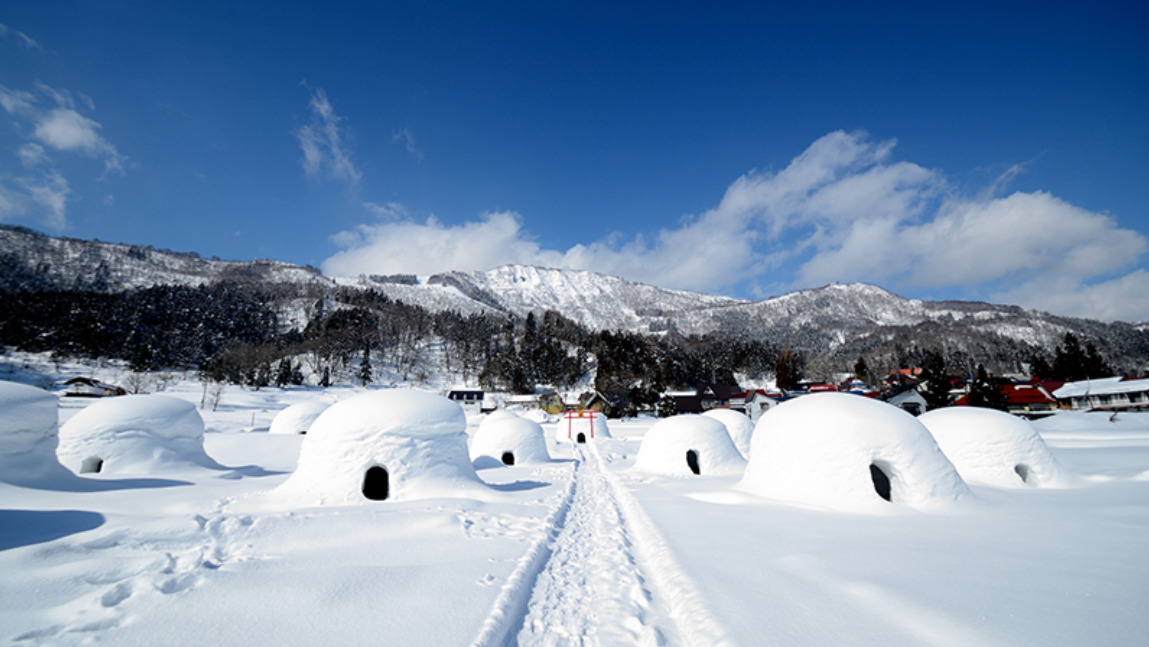
New Tour
1-Day Tour: Traditional Igloo "Kamakura" Festival & Snow Fun Activities
- Spots:
- Pick-up:
- Drop-off:
Kamakura are traditional igloo-like houses that are built in the snowy regions of Japan. From the last week of January through the end of February, the rural town of Iiyama hosts “The Kamakura Village” festival, where about 20 Kamakura, each of them 3 meters tall, are built each year by the local community. It is also important to mention that the Kamakura transform into restaurants during the festival period, where guests may enjoy a local specialty hot pot inside of each of the snow huts!
Nozawa Onsen ‘Dosojin’ (Fire Festival)
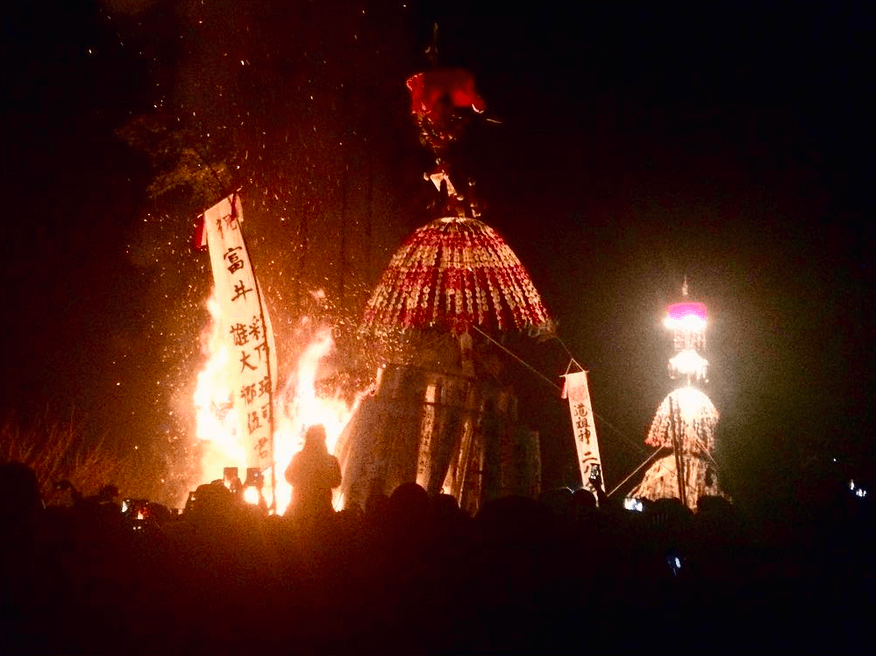
1-Day Tour From Hakuba & Nagano: Nozawa Fire Festival & Snow Monkeys
- Spots:
- Pick-up:
- Drop-off:
Taking place on January 15th each year, the Nozawa Onsen ‘Dosojin’ is considered one of Japan’s great fire festivals. Attracting thousands of visitors to one of Nagano’s most popular ski resorts, the festival includes preparatory events on both January 13th and 14th with the main action taking place on the night of the 15th, when the town and audience parade through the village to the main festival area where a wooden shrine is set to be attacked with fire by the young men of Nozawa while simultaneously defended by older ones. Raucous, crowded and just a little bit risky, Nozawa Onsen Dosojin brings the heat in the middle of winter. In recent years the event has been limited to only those spending the night in Nozawa, so if you want to guarantee that you can attend we recommend booking a hotel in advance in case such restrictions are in place again.
FEBRUARY
Narai-juku Ice Candle Festival
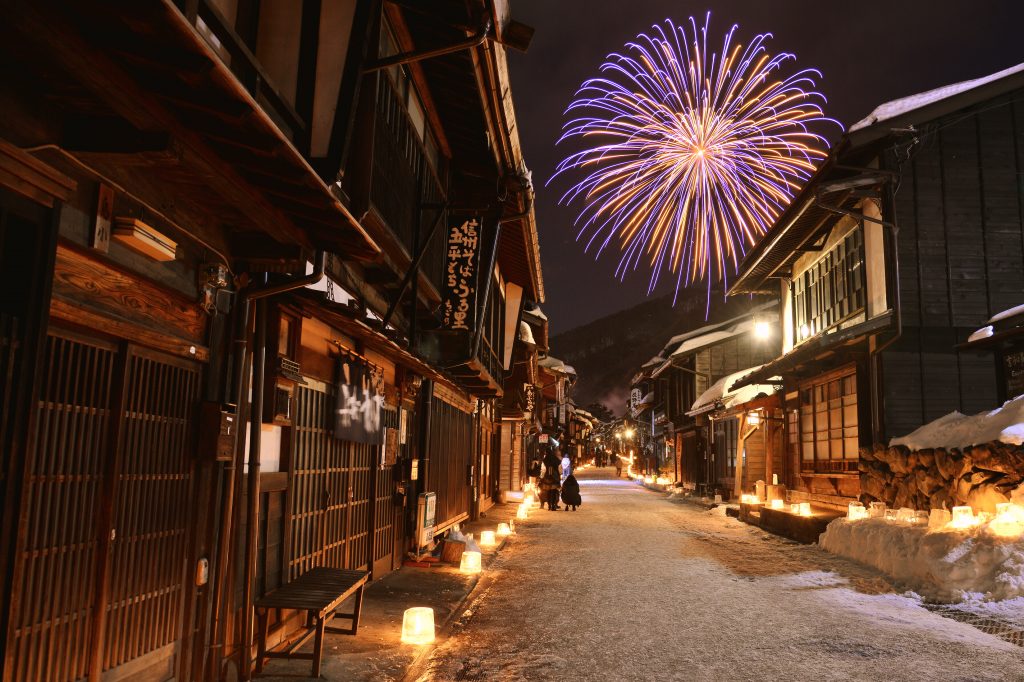
1-Day Tour from Nagano and Matsumoto: Experience Matsumoto Castle and Narai-juku
- Spots:
- Pick-up:
- Drop-off:
Held on February 3rd, the Narai-juku Ice Candle Festival brings the historic town into beautiful light in the cold of winter. Once one of the wealthiest towns along the Nakasendo, Narai was known as ‘Narai of a Thousand Houses’; a name that hints at its former size and importance. During the Ice Candle Festival, Narai is lined with ice candles and snow sculptures, imbuing the beautiful Edo Period town with a magical atmosphere. A fireworks display is the climax of the festival, which rising above the candle-lined historic streets of Narai, is a particularly charming sight. Largely unknown to international visitors, the festival promises to become more popular in coming years.
Kanbayashi ‘Sendayaki’ (Fire Festival)
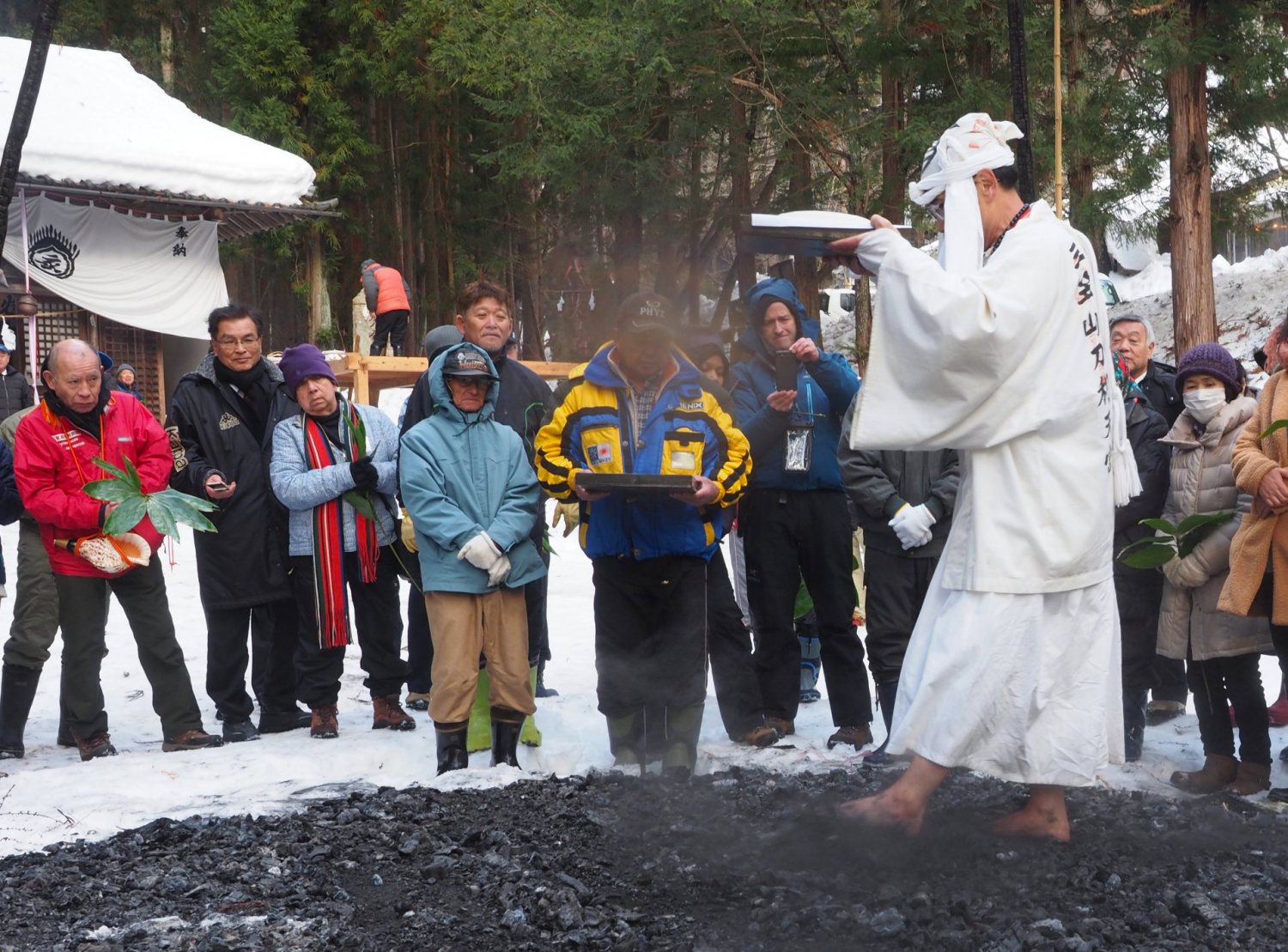
Notably smaller than Nozawa Onsen’s famous fire festival, Kanbyashi ‘Sendayaki’ takes place in the hot spring villages of Shibu Onsen and Kanbayashi Onsen, each year on February 4th. The event sees members of the ‘Mitake-kyo Chusei-kosha’ – a Shinto sect that worships Mount Ontake – move from the lower town of Shibu Onsen up to Kanbayashi Onsen in ceremonial attire and cutting ‘shimenawa’ (sacred ropes) along the way. Once in Kanbayahi Onsen – and only a short distance from the Jigokudani Monkey Park – participants engage in ceremonial fire-walking as a form of purification. Much calmer but in many ways more engaging that Nozawa’s great fire festival, Kanbayashi's ‘Sendayaki’ offers a very local and interesting glimpse into Japan’s native Shinto beliefs.
Zenko-ji Tomyo Lantern Festival
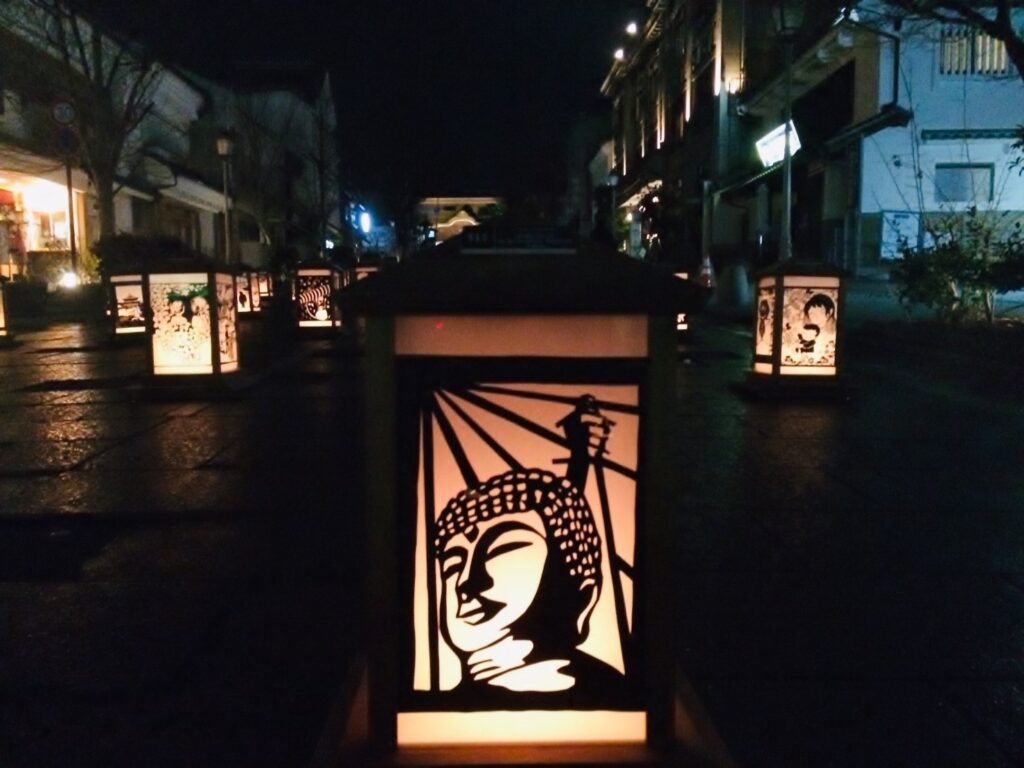
(Special Event) Nagano's Hidden Samurai Town & Tomyo Lantern Festival Tour
- Spots:
- Pick-up:
- Drop-off:
The Zenko-ji Tomyo Lantern Festival is one of the biggest events of the year in Nagano City. Held in mid-February – dates can vary from year-to-year – the festival commemorates Nagano’s role as host of the 1998 Winter Olympic Games and is underpinned by the Buddhist act of offering light to the Buddha. ‘Kiri-e’ paper lanterns at placed within the temple grounds with the surrounding ‘shukubo’ (traditional temple lodgings) playing host to light installations while the temple itself is illuminated. With a high chance of snow at night during the festival, the Tomyo Lantern Festival is one of winter’s true highlights.
MARCH
Spring Skiing & Cherry Blossoms
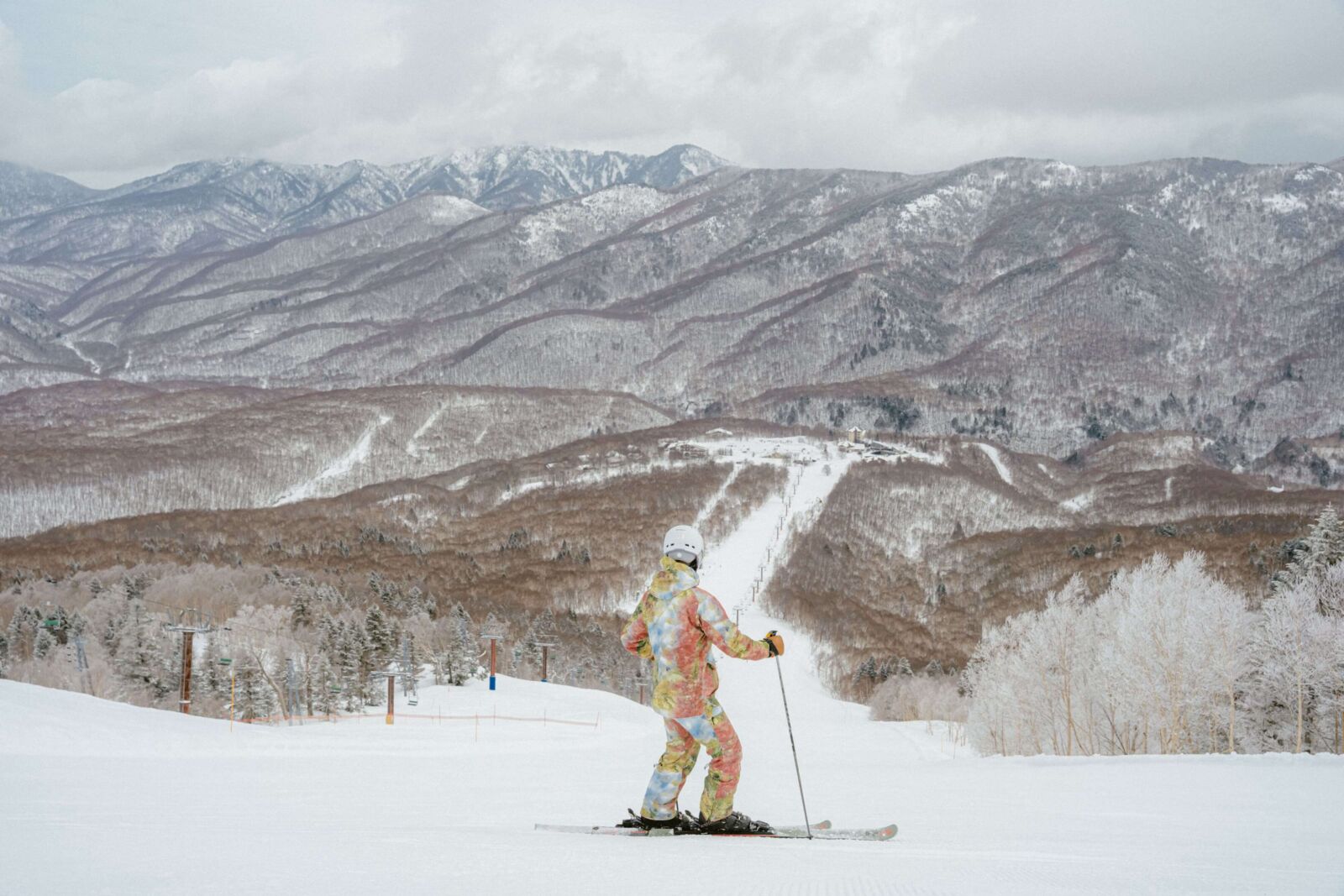
March in Nagano means more snow and the start of spring ski season. Of all of the region’s fantastic resorts, Shiga Kogen is the best place to enjoy spring skiing and snowboarding and when doing so, we recommend staying at Hotel Grand Phenix in the Okushiga ski fields. As Japan’s largest and highest ski resort, Shiga enjoys Nagano’s longest season and remains open well into April – or as late as May in a good season – with the crowds quickly disappearing during spring. At the same time, the earliest cherry blossoms will bloom in the valley below allowing visitors to enjoy the rare combination of skiing and blossoms.
Snow-shoeing in Togakushi
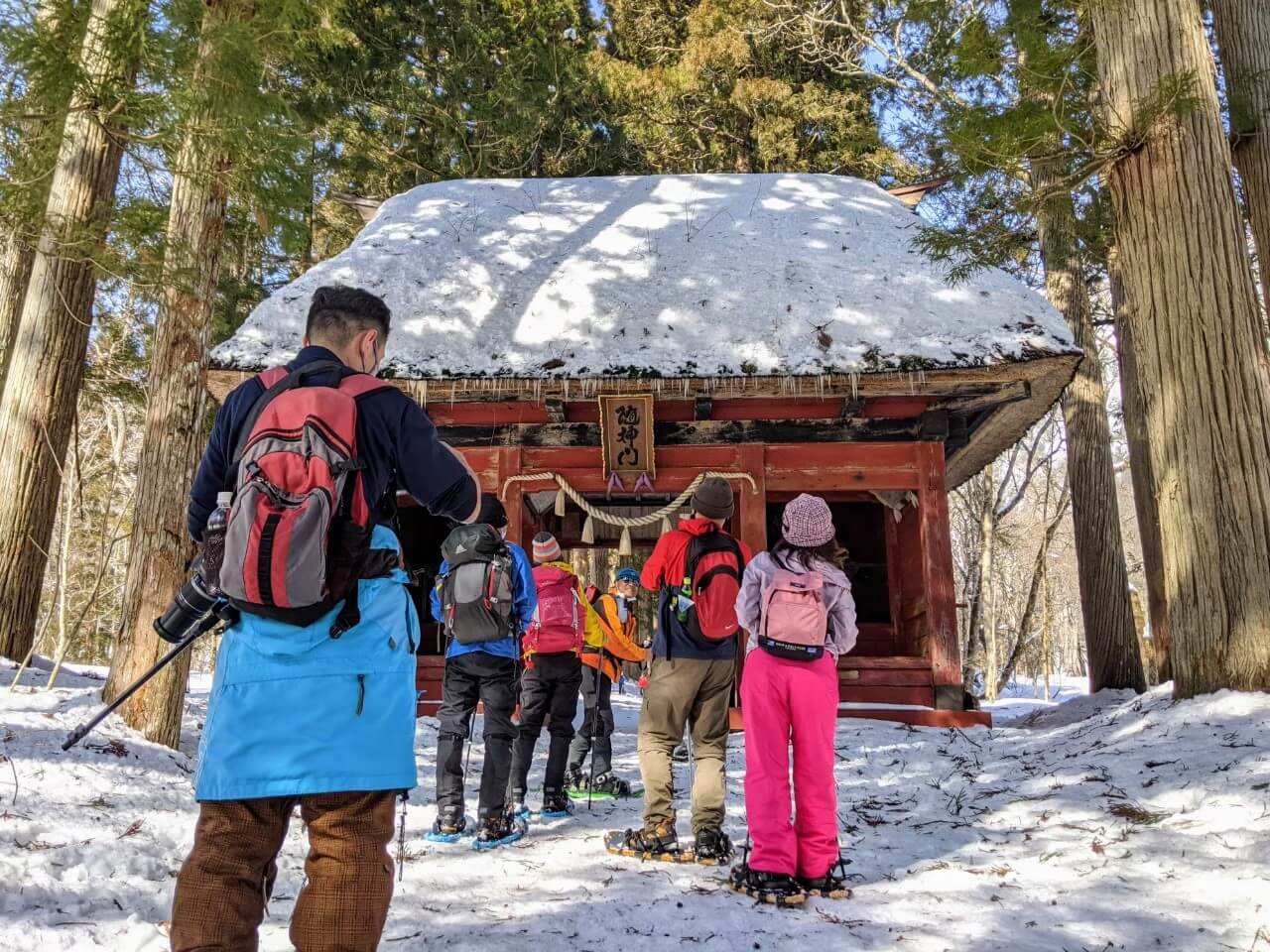
While you can expect the snow cover in Shiga Kogen to remain very good in March, others areas will see the snow slowly start to recede, opening-up activities such as snow-shoeing. Accessible from Nagano Station using local bus services, Togakushi is home to some of Japan’s most important Shinto shrines and one of the best places to enjoy snow-shoeing. The forest shrines and nearby attractions including Kagami-ike can be reached using snowshoes – an enjoyable activity for anyone of reasonable fitness.
APRIL
Cherry Blossom Festivals of Nagano
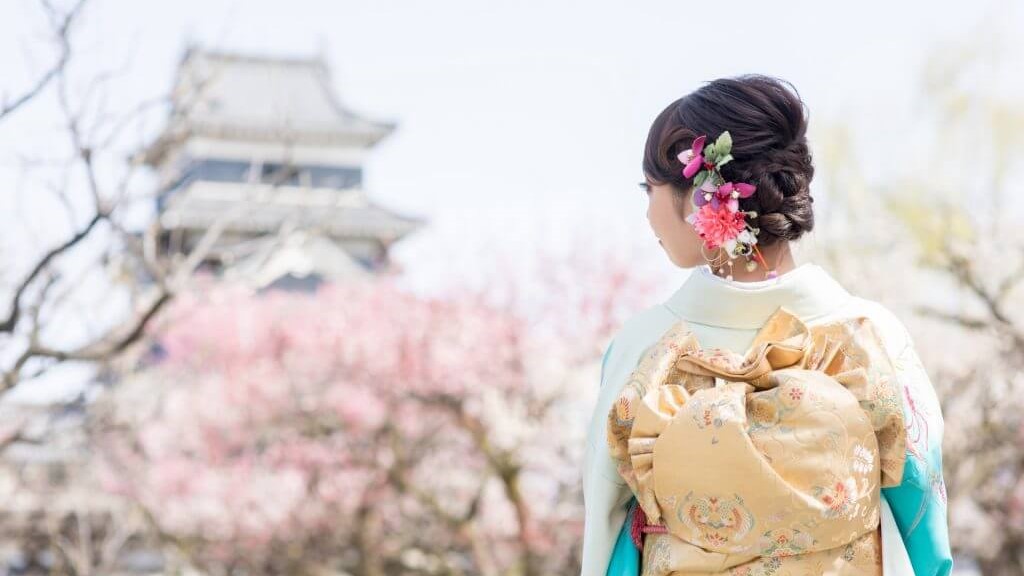
The blossoms of Nagano and Central Japan bloom later than many other regions of Japan, typically at their best from early to mid-April. Through that time the blossom festivals of Nagano attract tens of thousands of visitors, starting with the most famous of them all – the Takato Castle Park Blossom Festival. Taking place in the first week of April – the exact dates are dependent on the timing of the bloom – the festival is regarded as one of the best in Japan and heralds the start of a busy calendar of blossoms events including festivals in Matsumoto, Nagano and beyond.
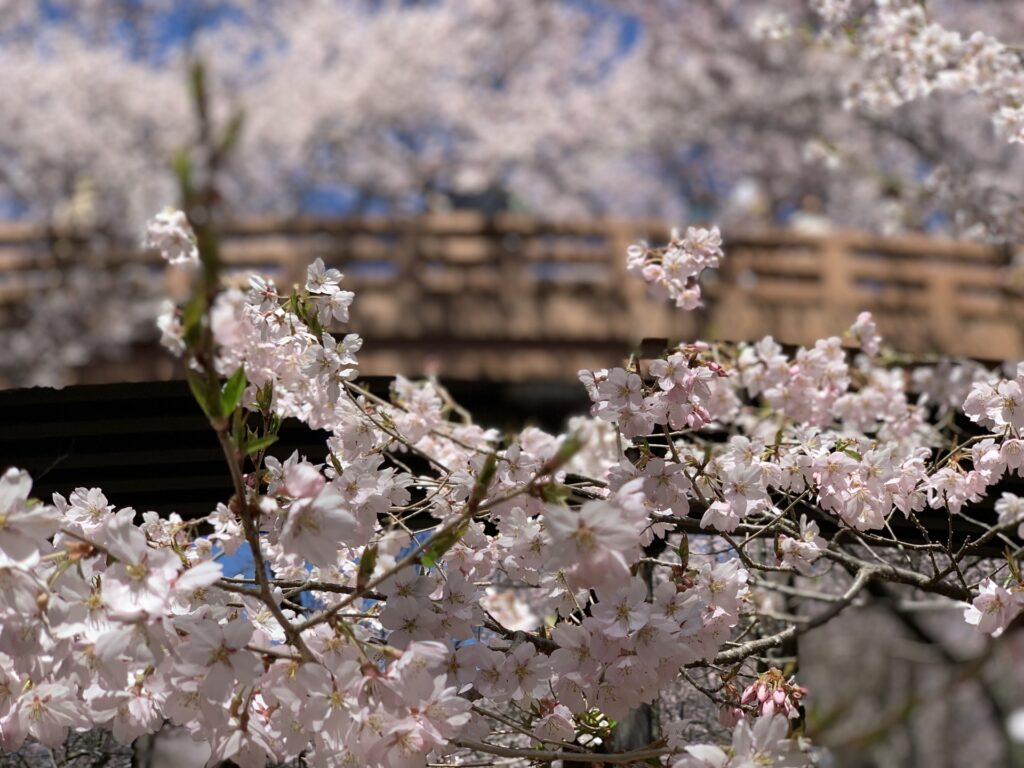
For guests wanting to enjoy the blossoms of Nagano on a guided tour, our 1-Day Snow Monkeys & Cherry Blossoms Tour operates each April and combines a visit to the monkey park with an afternoon of cherry blossom-viewing – a great way to enjoy the best of Nagano in spring!
Tateyama-Kurobe Alpine Route
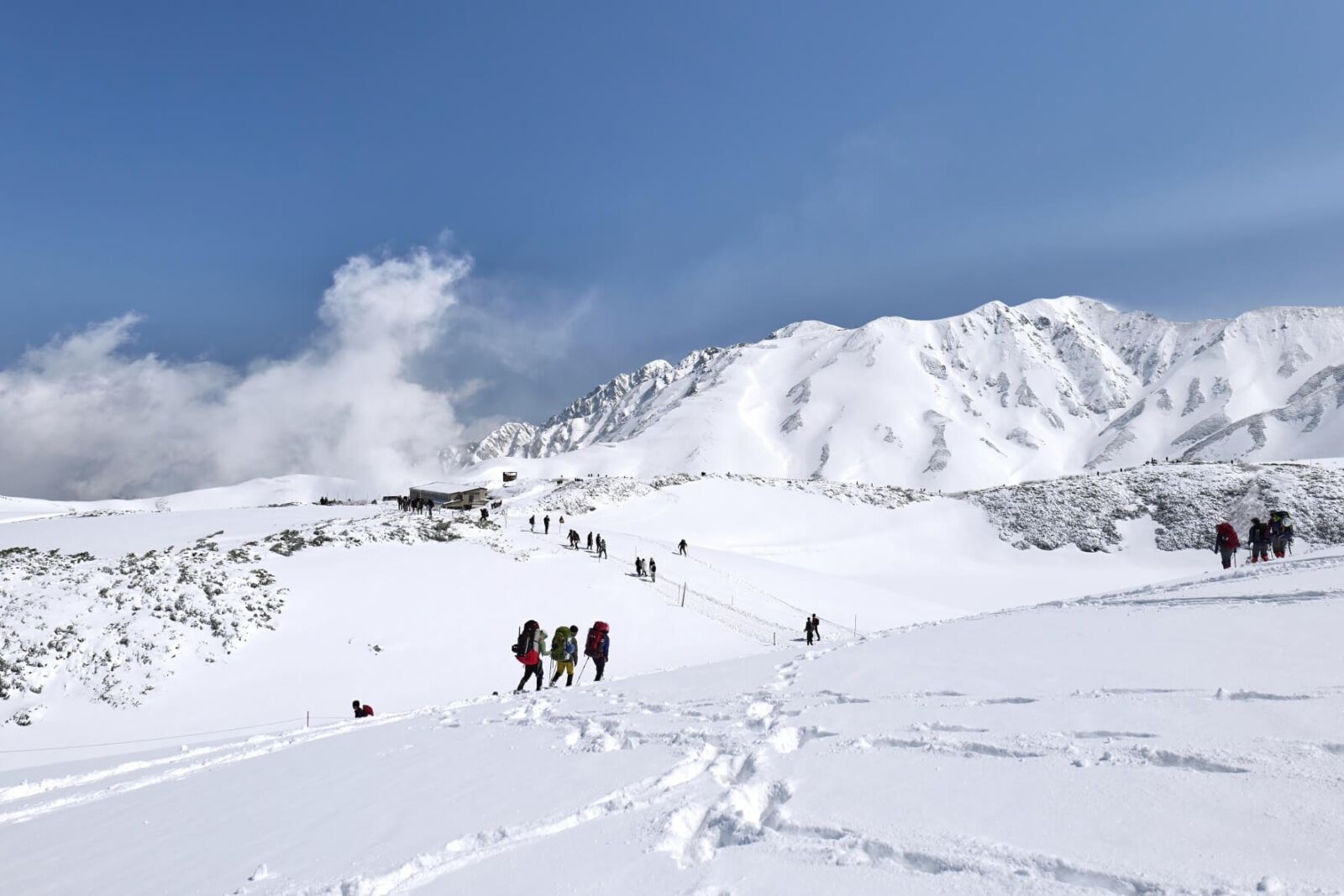
Popular
[Spring Only] 1-Day Tour from Nagano: Snow Walls of Tateyama-Kurobe Alpine Route
- Spots:
- Pick-up:
- Drop-off:
The Tateyama-Kurobe Alpine Route is regarded as one of Japan’s most dramatic alpine landscapes and among the best outdoor experiences anywhere in the country. Opening to the public each year on April 15th, the Alpine-Route crosses Japan’s highest mountain range from Ogizawa Station on the Nagano-side of the mountains, to Tateyama Station on the Toyama-side. At the summit, visitors can enjoy the spectacular sight of its fabled ‘Snow Walls’, reaching up to 18 metres as they tower over onlookers. Hugely popular, expect the Alpine Route to be crowded – especially upon opening and on weekends – but it’s well-worth the effort of getting there. Our 1-Day Snow Walls of Tateyama-Kurobe Alpine Route Tour runs from April to June - a great way to make your journey to the summit easy and informative.
Kamikochi
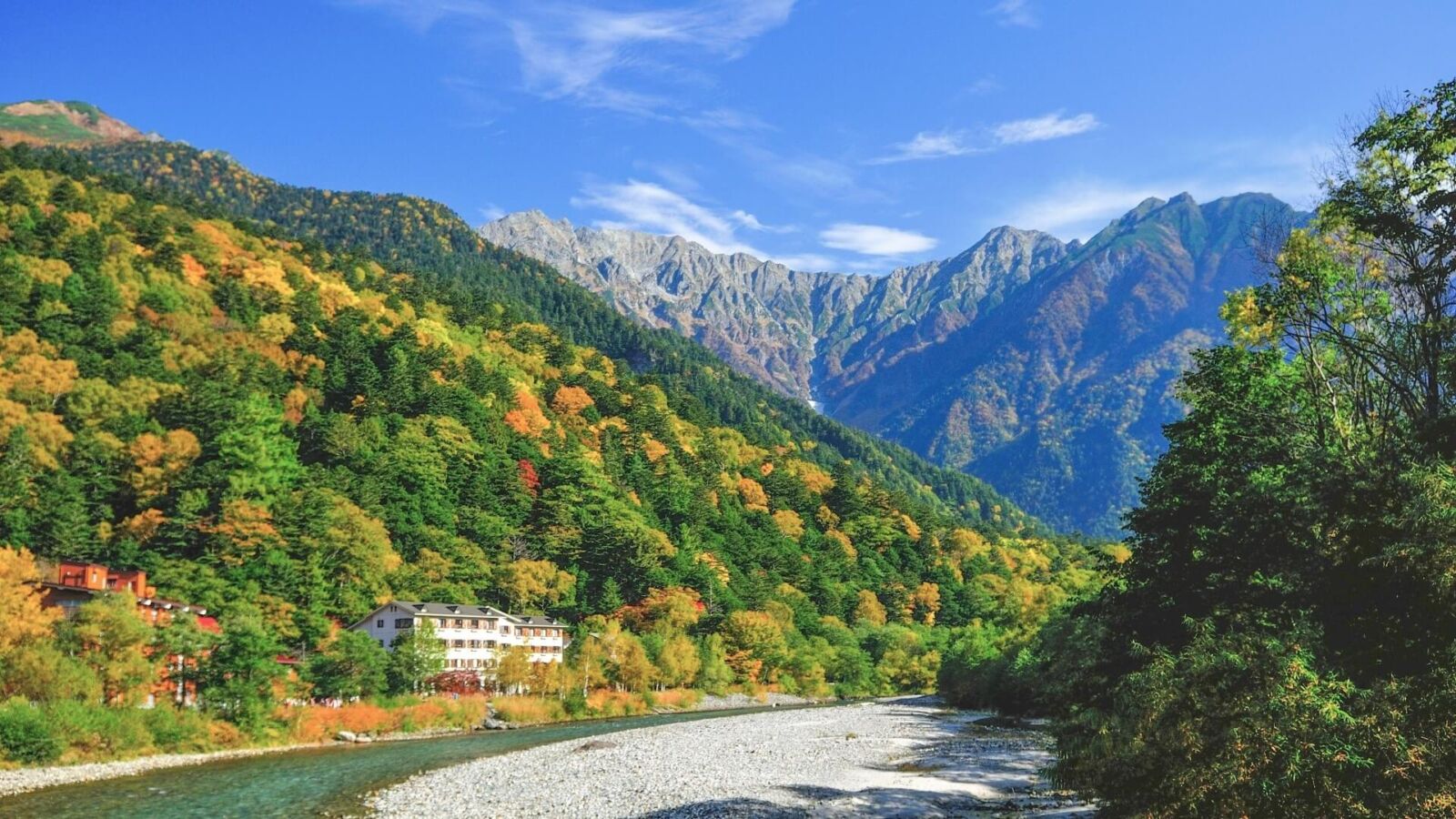
Best Selling
1-Day Tour from Nagano and Matsumoto: Kamikochi & Matsumoto Castle
- Spots:
- Pick-up:
- Drop-off:
Also opening to the public on April 15th, Kamikochi is considered the jewel of Chubu Sangaku National Park and another of Japan’s most spectacular alpine landscapes. Sitting between 1400 to 1600 metres above sea level, the valley follows the Azusa River while some of Japan’s tallest mountain peaks rise to over 3000 meters above. From the Kamikochi Bus Terminal, walking trails span-out along the valley – suitable to anyone of reasonable fitness – before more advanced hiking and mountaineering trails lead into the mountains.
Ueda Sanada Festival
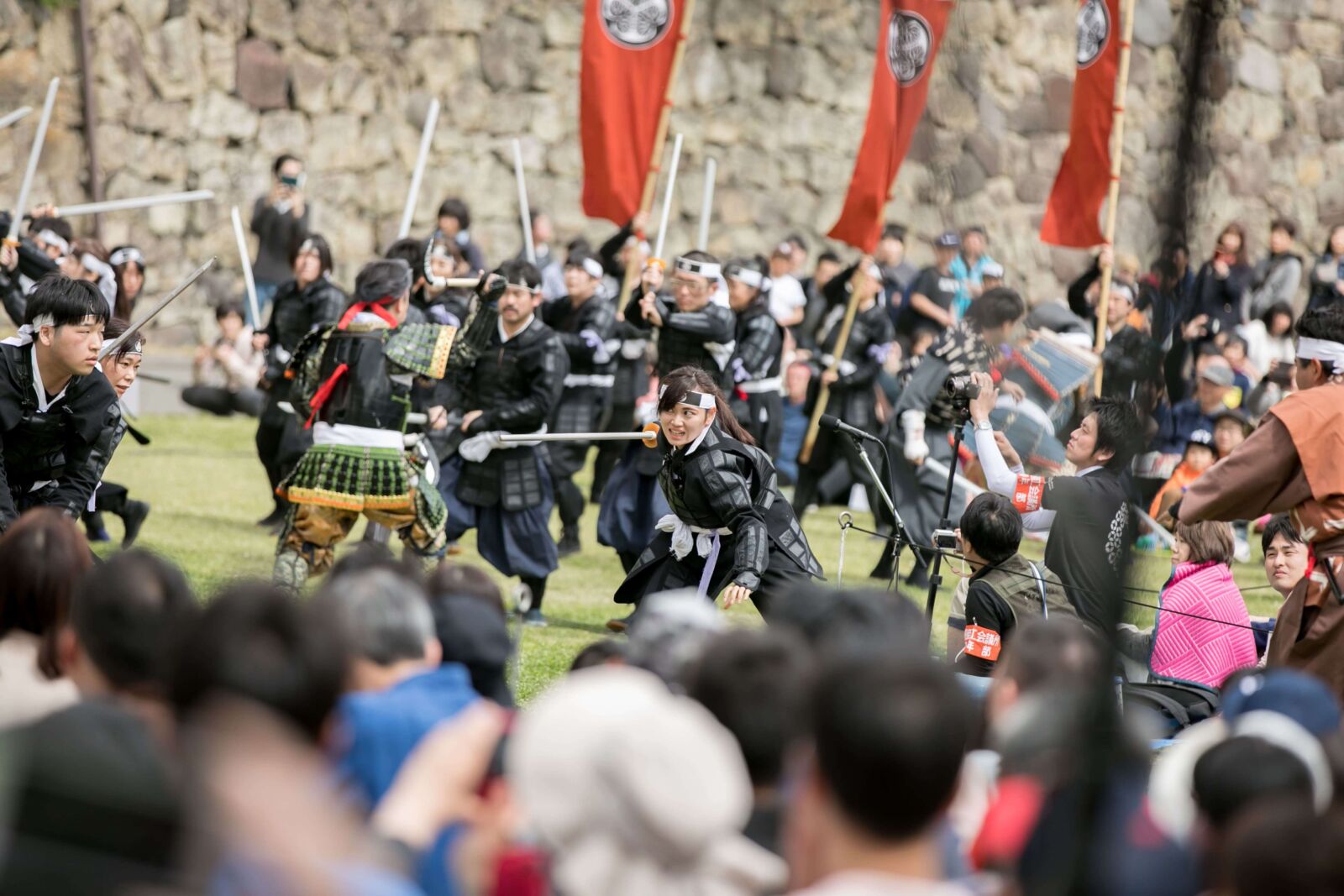
Taking place each year on the last Saturday of April, the Ueda Sanada Festival celebrates the legendary samurai in spectacular fashion. Hundreds of participants dress in period costumes with displays of gunnery, sword-fighting and ‘taiko’ drumming drawing thousands of visitors to the castle park to watch a brilliant historical display.
MAY
Baby Monkeys of Jigokudani
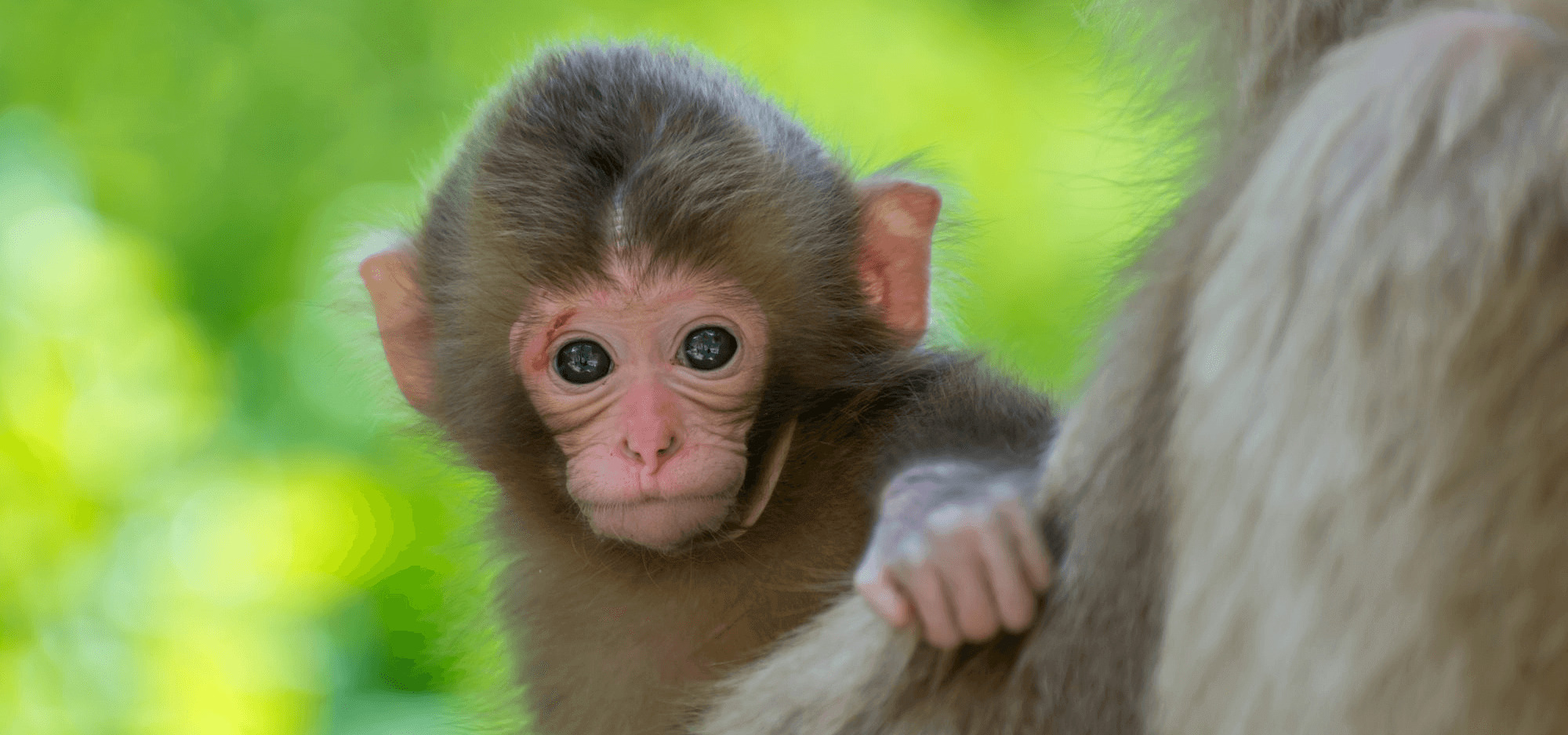
[START FROM NAGANO CITY] Private Snow Monkey Tour
- Spots:
- Pick-up:
- Drop-off:
May is one of the best times of year to visit the monkey park for one special reason – babies, lots and lots of babies. Expectant mothers are pregnant through winter and give birth anytime from late-April until June with most babies appearing sometime in May. The little ones are just as curious about us as we are about them, with mothers giving their little ones quite a lot of independence quickly. With no barriers between the visitors and monkeys, it’s a truly memorable experience.
JUNE
Hiking in the North Alps
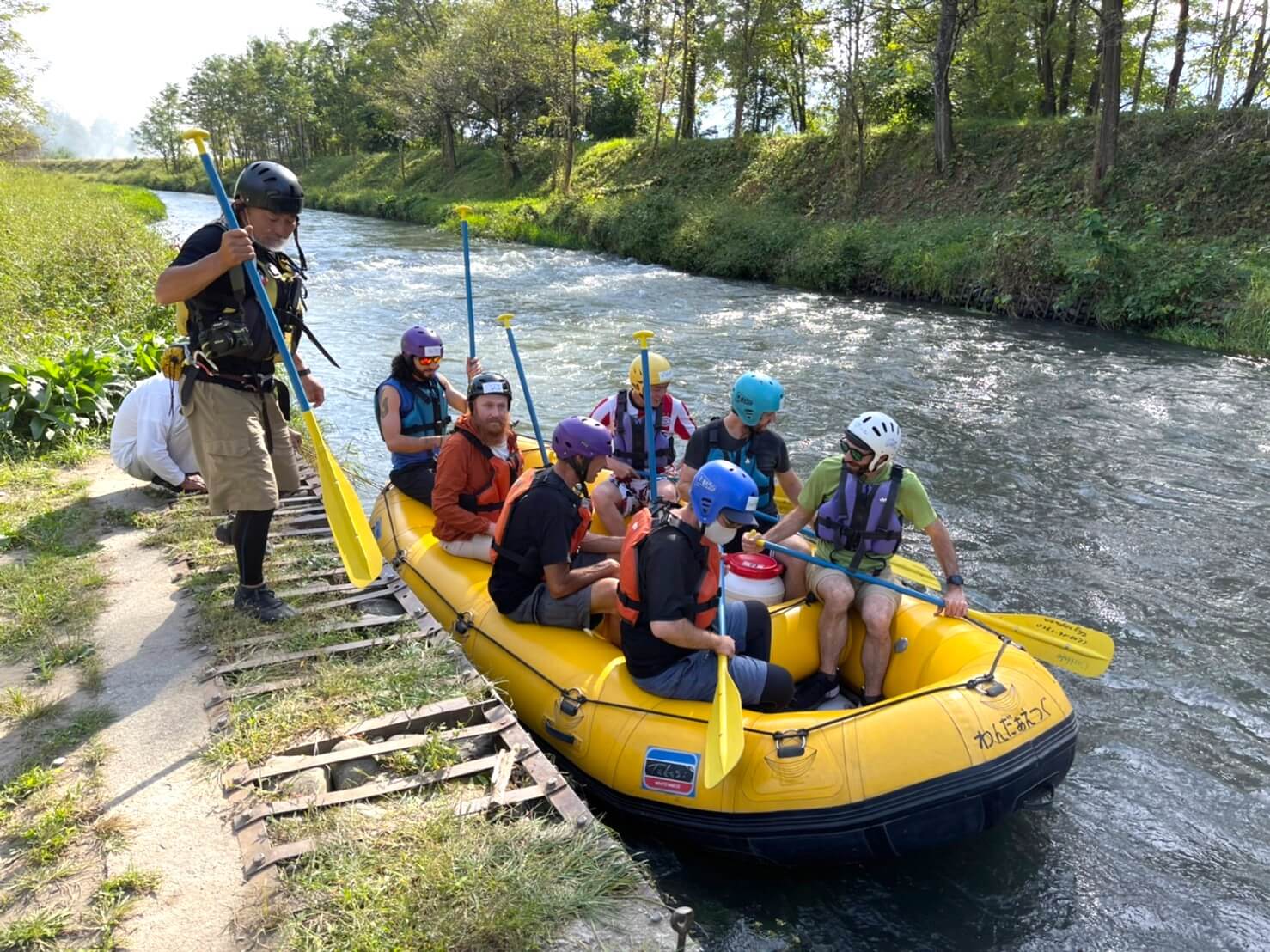
[Summer/Autumn only] Tateyama-Kurobe Tour: Walking on the 'Roof of Japan'
- Spots:
- Pick-up:
- Drop-off:
At its heart Japan is a mountainous country. Over seventy percent of the country is considered ‘mountainous’ with the largest concentration of high peaks occurring in Nagano and the surrounding prefectures that make-up Central Japan. Three main ranges – the Akaishi, Kiso and Hida Mountains – are more commonly referred to as the Southern, Central and Northern Alps respectively and collectively make-up the ‘Japanese Alps’. The North Alps – a range that includes the Tateyama-Kurobe Alpine Route and Kamikochi – is considered to offer the best hiking, with some of its most popular trails accessible via trailheads in Azumino. Walks range from one-day hikes to multi-day courses requiring hikers to camp or stay in mountain huts overnight.
Walk the Historic Nakasendo
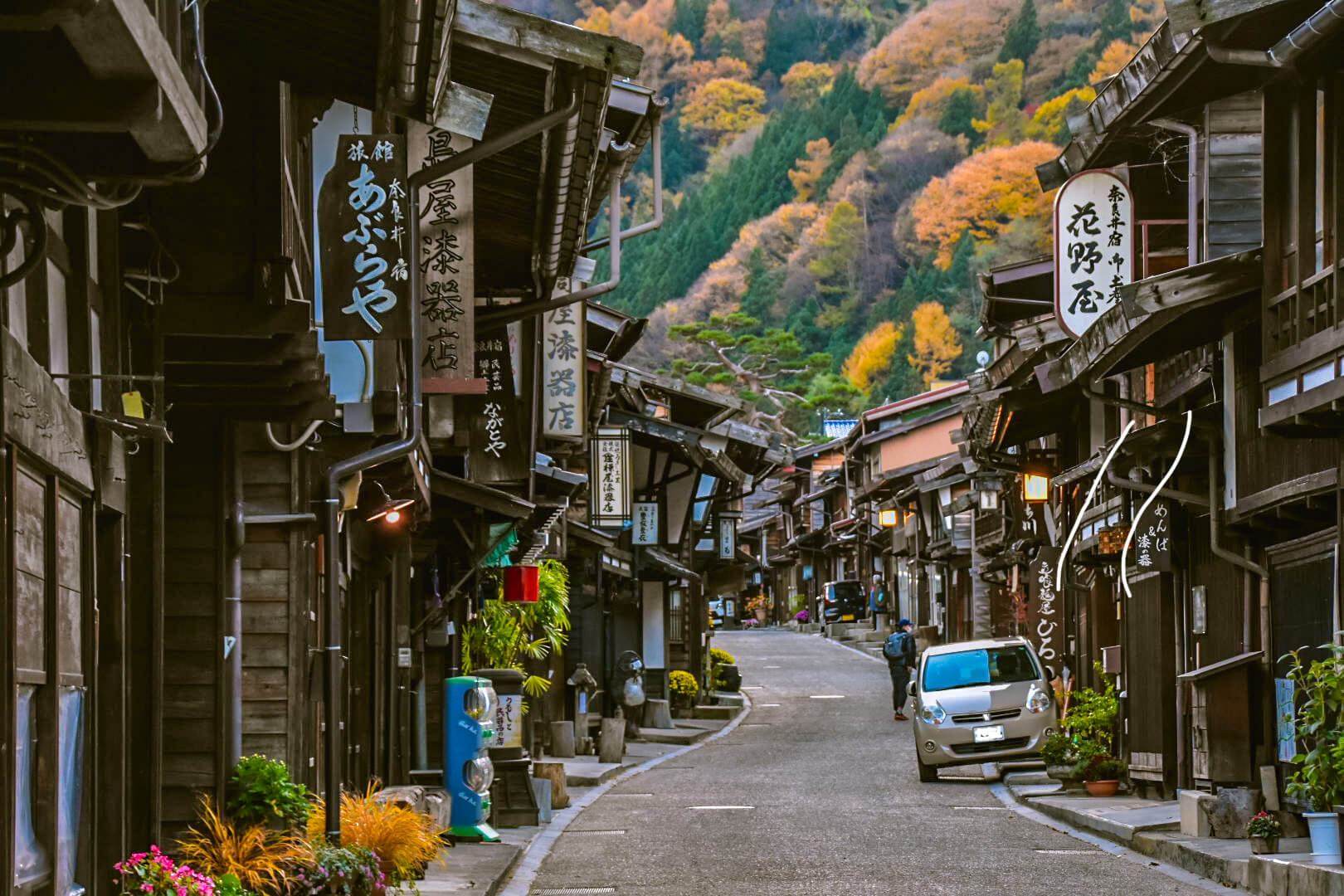
1-Day Tour from Nagano and Matsumoto: Step into the Past on the Nakasendo
- Spots:
- Pick-up:
- Drop-off:
To the south of the North Alps and running through the Kiso / Central Alps, the ‘Nakasendo’. Originally spanning over 500 kilometres between Kyoto and Edo (now called Tokyo), the Nakasend’ was one of five major routes linking Japan’s two most important cities during the Edo Period (1603 to 1868). Translating as ‘Road in the Mountains’, the Nakasendo consolidated many ancient routes and paths into an official highway through the centre of the country – Japan’s beautiful mountainous heartland. Much of the route can still be walked today, with the section between the historic post towns of Magome-juku and Tsumago-juku being considered the most enjoyable, with Narai-juku being another notable highlight.
JULY
Summer Fun in Hakuba
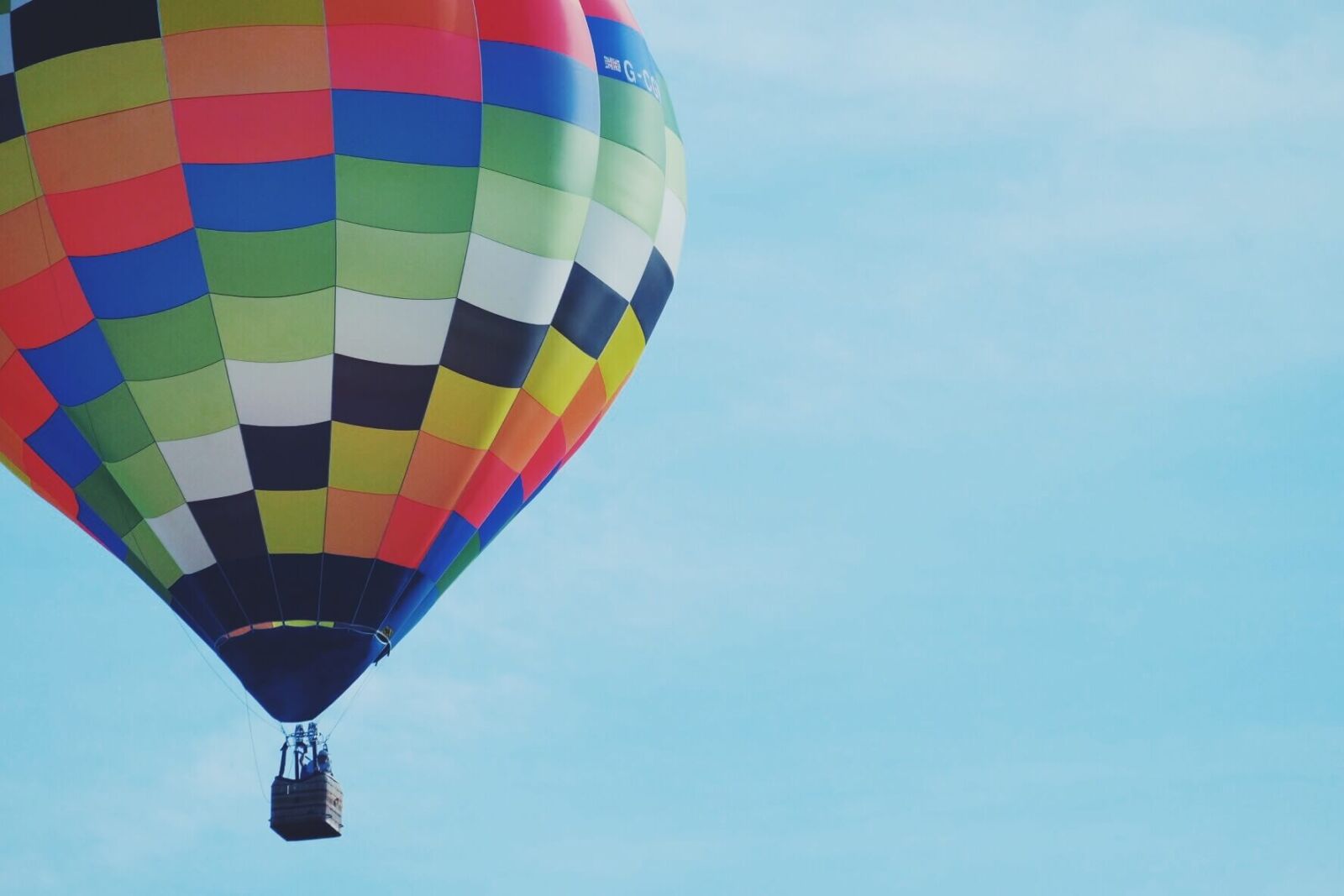
Best-known for its world-class skiing and snowboarding, Hakuba is quickly establishing itself as an all-year-round destination. In the warmer months of the year, Hakuba offers just as much to do, if not more, than in winter with hiking, rafting, mountain-biking, hot air ballooning, canyoning, SUP, trail running and plenty more. Gondolas including those in Happo-One, Goryu, Iwatake and Tsugaike also operate in summer, opening-up hiking trails and beautiful mountain vistas. With lots of great accommodation options available and an increasing number of fantastic restaurants, Hakuba is popular for lots of reasons.
The Giant Cedars of Togakushi
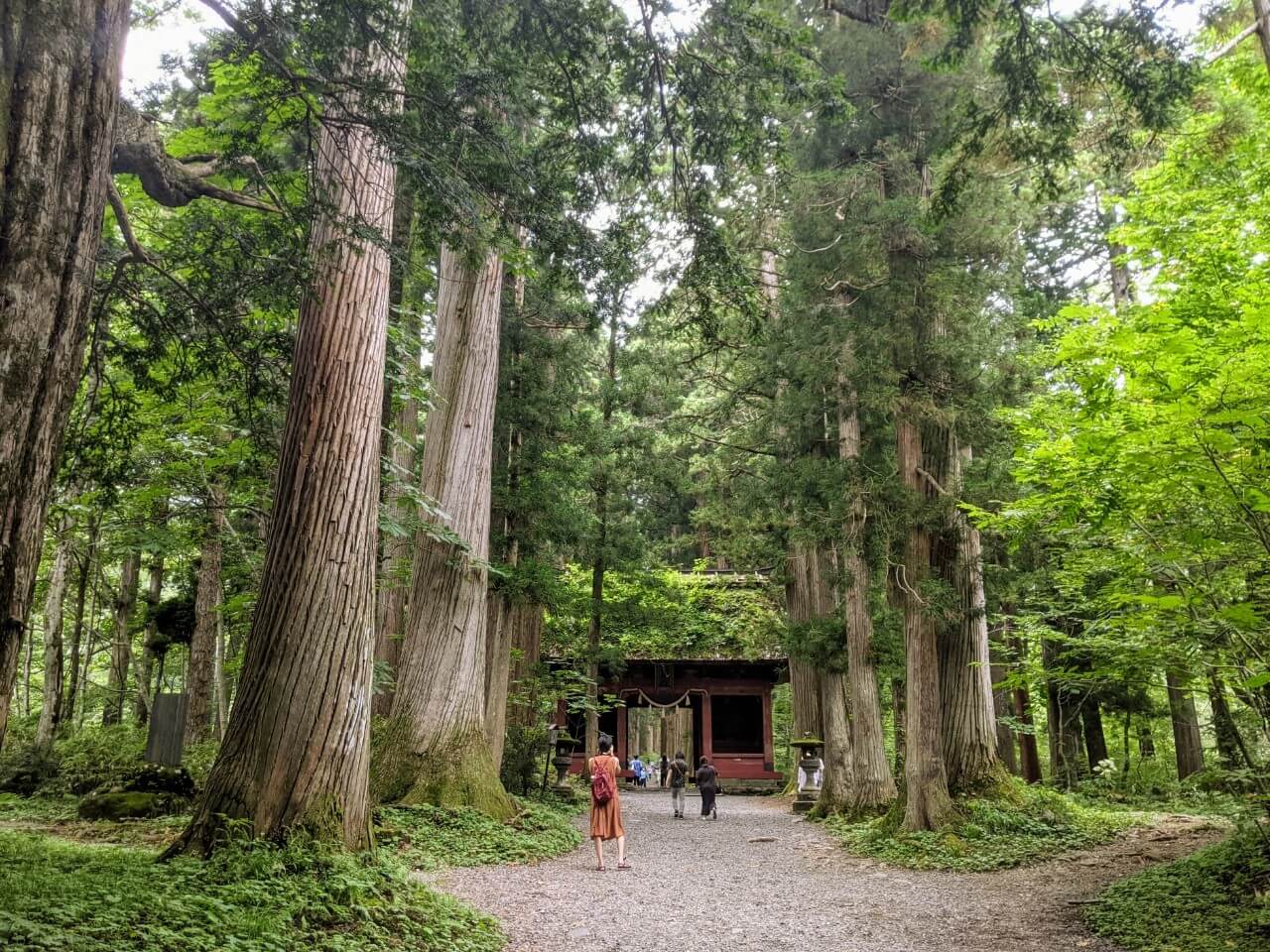
1-Day Togakushi Legends Tour: Hands-on Soba Noodles, Ninja Village, and Hidden Shrines
- Spots:
- Pick-up:
- Drop-off:
Readily accessible using local bus services from Nagano Station, Togakushi is home to some of Japan’s most important Shinto shrines, legends of ninja, traditional bamboo craft and of course its famous ‘soba’ (buckwheat noodles). As the temperature rises in summer, the forest trails of Togakushi offer escape from the heat
AUGUST
Binzuru Festival
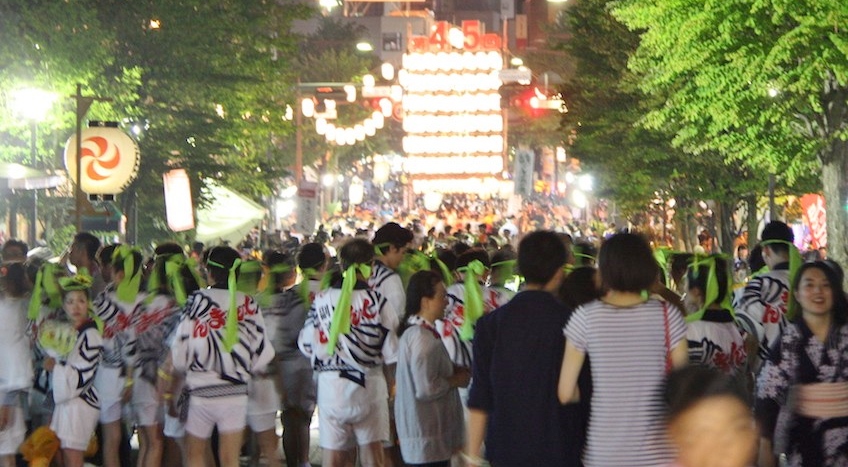
Summer is all about festivals and fireworks in Japan and in Nagano City, the first and largest of them is the Binzuru Festival. Taking place on the first Saturday each August, the festival features up to two hundred groups of dancers and other participants moving along Nagano’s main road. Performances take place through the day with the largest groups moving through the streets in the evening. Free to attend just follow the crowds from Nagano Station to find the dancers.
Azumino Fireworks Festival
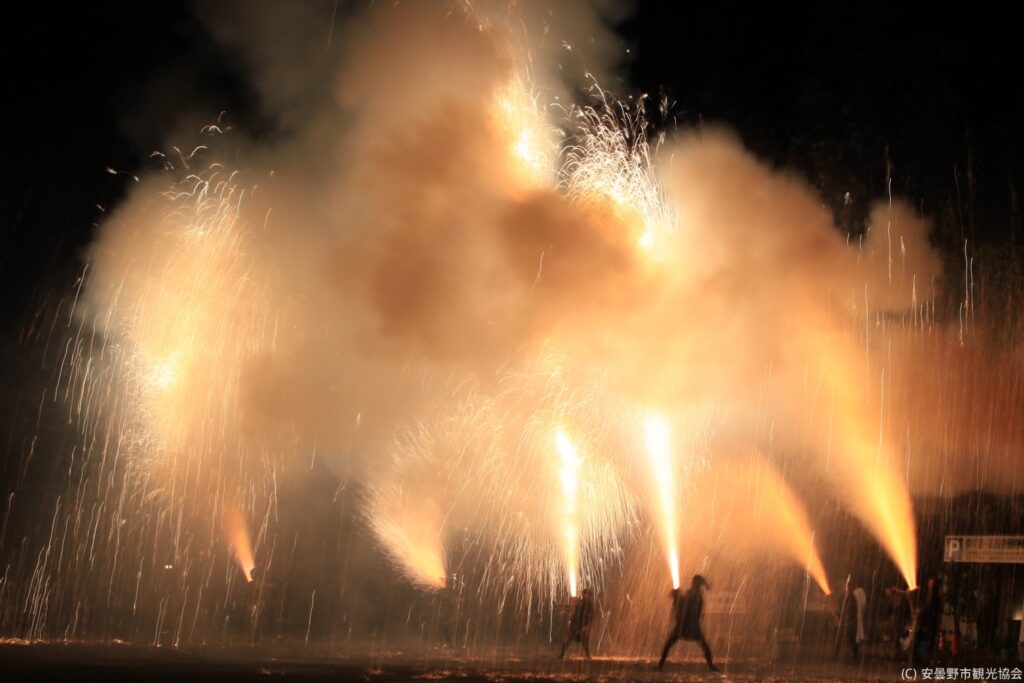
The Azumino Fireworks Festival takes place on August 14th each year and lays claim to being the third largest fireworks display in Nagano Prefecture. The festival sees around 12,000 fireworks bursting into the night sky, with the display starting from 19:00 and drawing thousands of local residents. Beautiful, big but very local, the Azumino Fireworks Festival is an enjoyable way to experience a summer festival just like a local.
Zenko-ji Temple Summer ‘Ennichi’

Also held in mid-August, Nagano City’s summer ‘Ennichi’ takes place within the Zenko-ji Temple complex. Buddhist and Shinto beliefs hold that this time of year – a period known as ‘Obon’ – is when the human and spirit worlds are at their nearest. The festival is held to welcome those spirits, including those of our ancestors, and allow us to commune with them through a dance called ‘Bon-Odori’. Everyone is welcome to participate as dancers circulate around a platform raised in front of the temple. Taking place every year across 2 days in Mid-August, the festival is free to attend.
Tokimata Fireworks
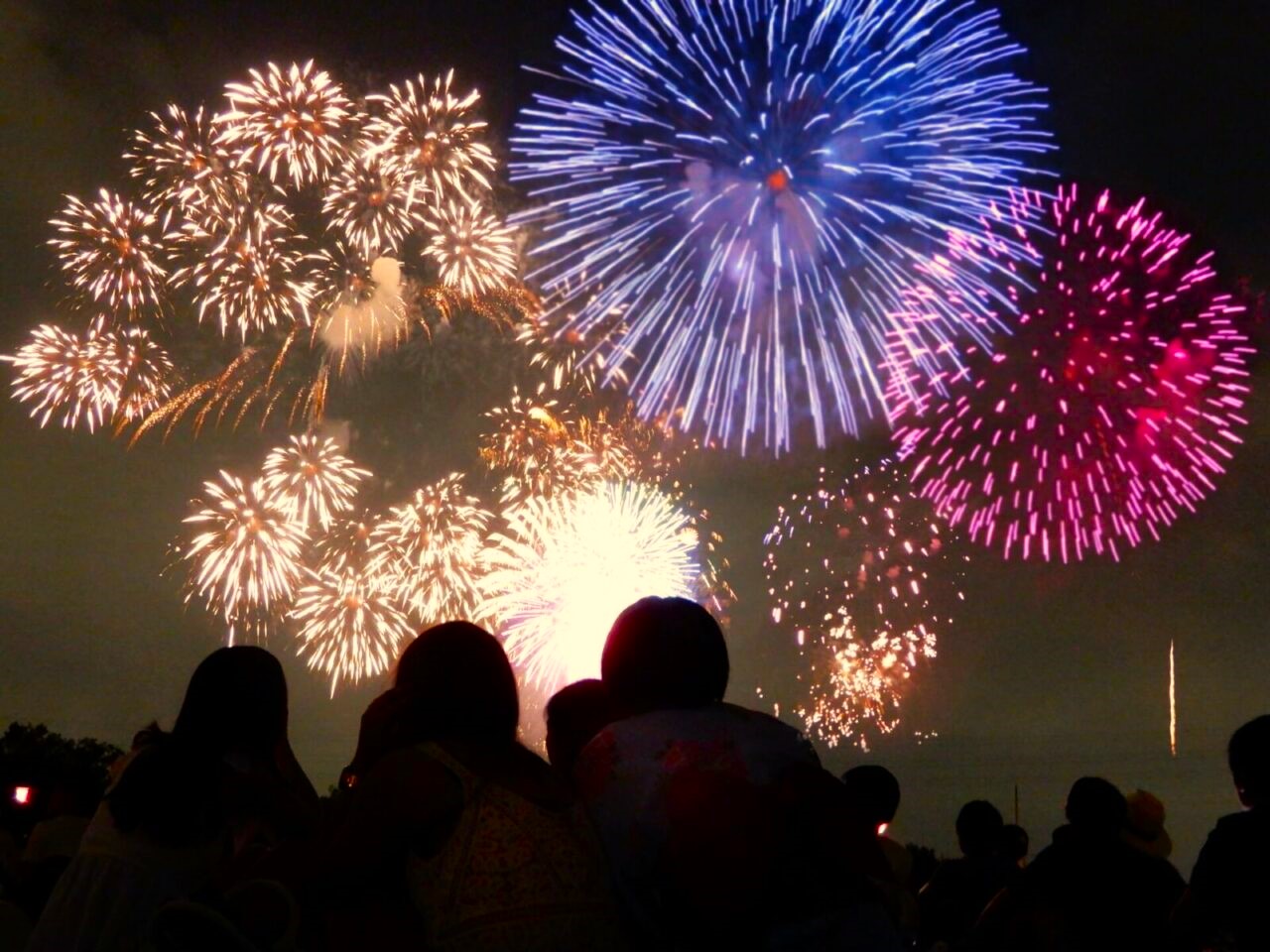
Moving away from Nagano City to Iida in the south, the Tokimata Fireworks is another very local festival that’s great fun to join. The festival is held every year on August 16th and see local families and friends come together to enjoy a small but boisterous display in the warm summer night. It may take time to get there, but it’s well worth the effort.
SEPTEMBER
Azumino O-Fune Matsuri
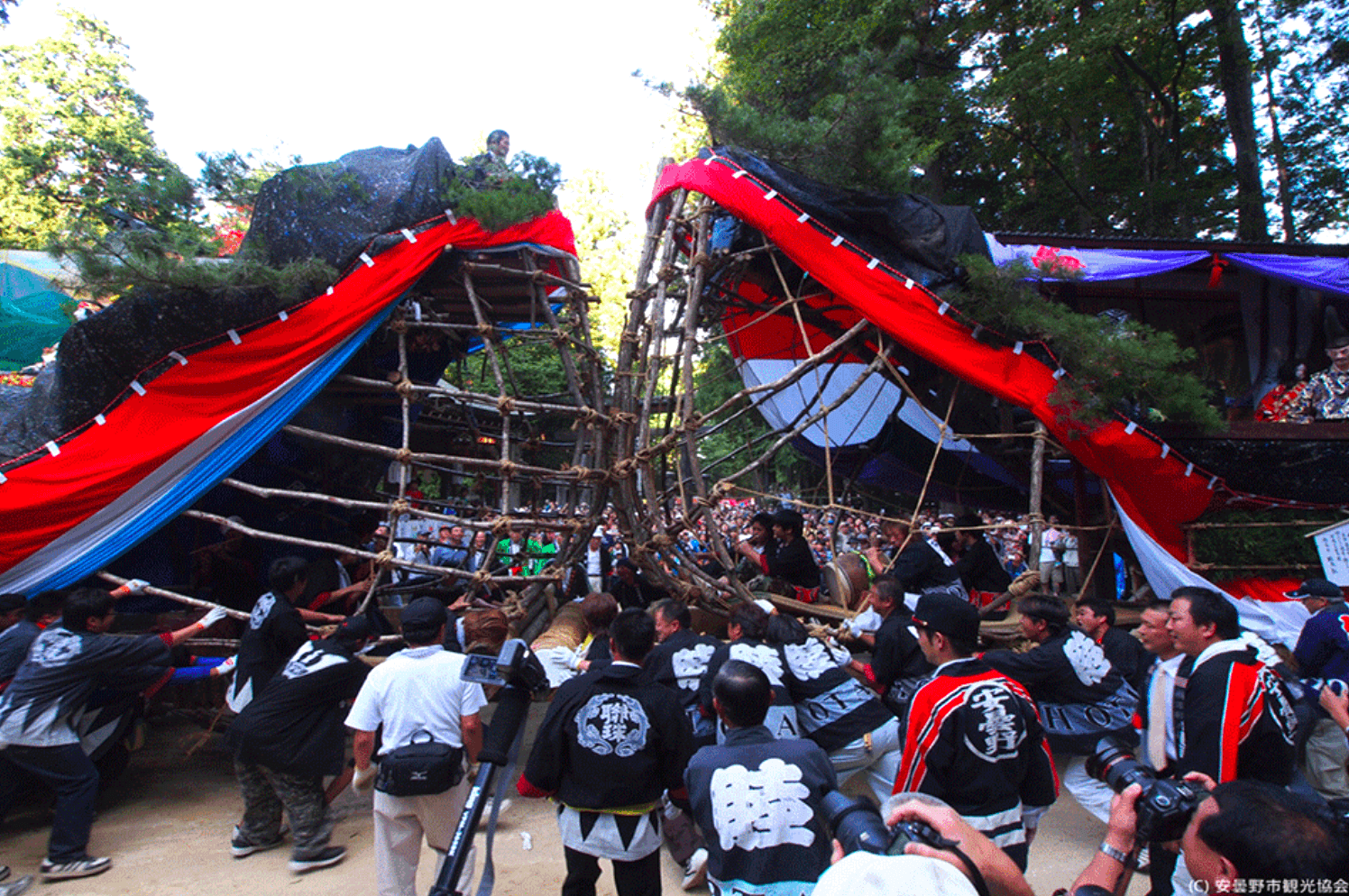
The Azuimno O-Fune Matsuri or ‘Ship Festival’ is a two-day festival taking place on September 26th to 27th each year. Celebrating the founding-legends of Azumino itself, the festival brings the local community together in a dramatic interpretation of the migration of the Azumi people to the region a very long time ago. The festival celebrates that event with a parade of ship floats, created by the community and pulled through the town toward Hotaka Shrine. On the second day, the two ships – one female and one male – meet and clash in-front of the shrine – a boisterous and lively re-enactment of Azumino’s founding legend and symbolic of the communities continued fertility and continuation. One of Nagano’s most raucous and enjoyable festivals.
*It is uncertain if the festival will be held this year. Please check for updated information before planning a visit.
OCTOBER
Autumn Leaves of Nagano
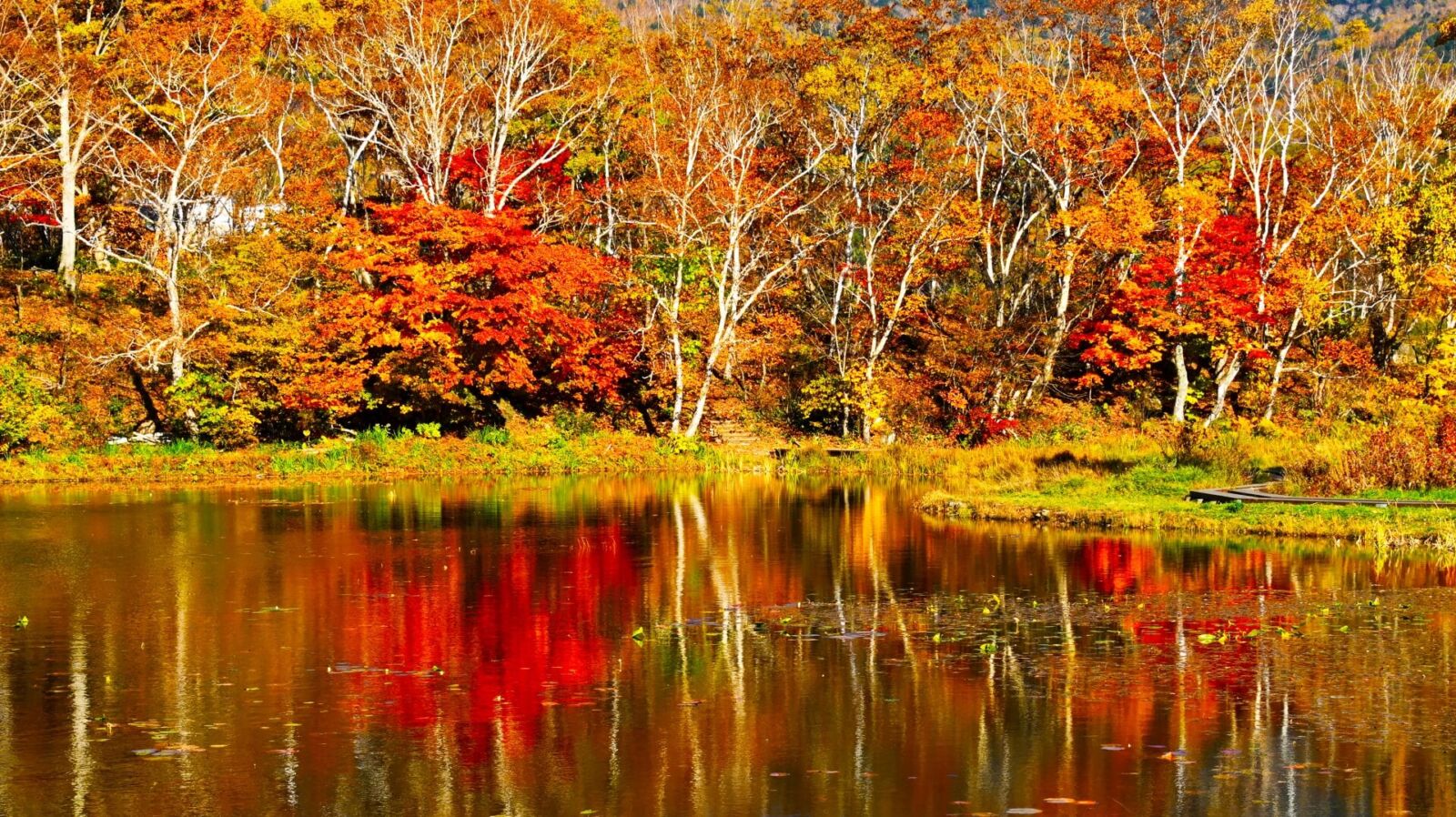
Japan is synonymous with the beauty of its autumn leaves and there’s no better place to enjoy them than in Nagano. Blessed with pristine forests and mountain landscapes, Nagano’s leaves typically turn earlier than many other regions thanks to our higher elevation. As early as September, the colours will be at their best in higher areas such as the Tateyama-Kurobe Alpine Route, Kamikochi, Shiga Kogen and Hakuba before lower areas including Togakushi, Nozawa Onsen and eventually Nagano City are awash with colour. It is perhaps our favourite time to be in Nagano!
Hot Springs of Nagano
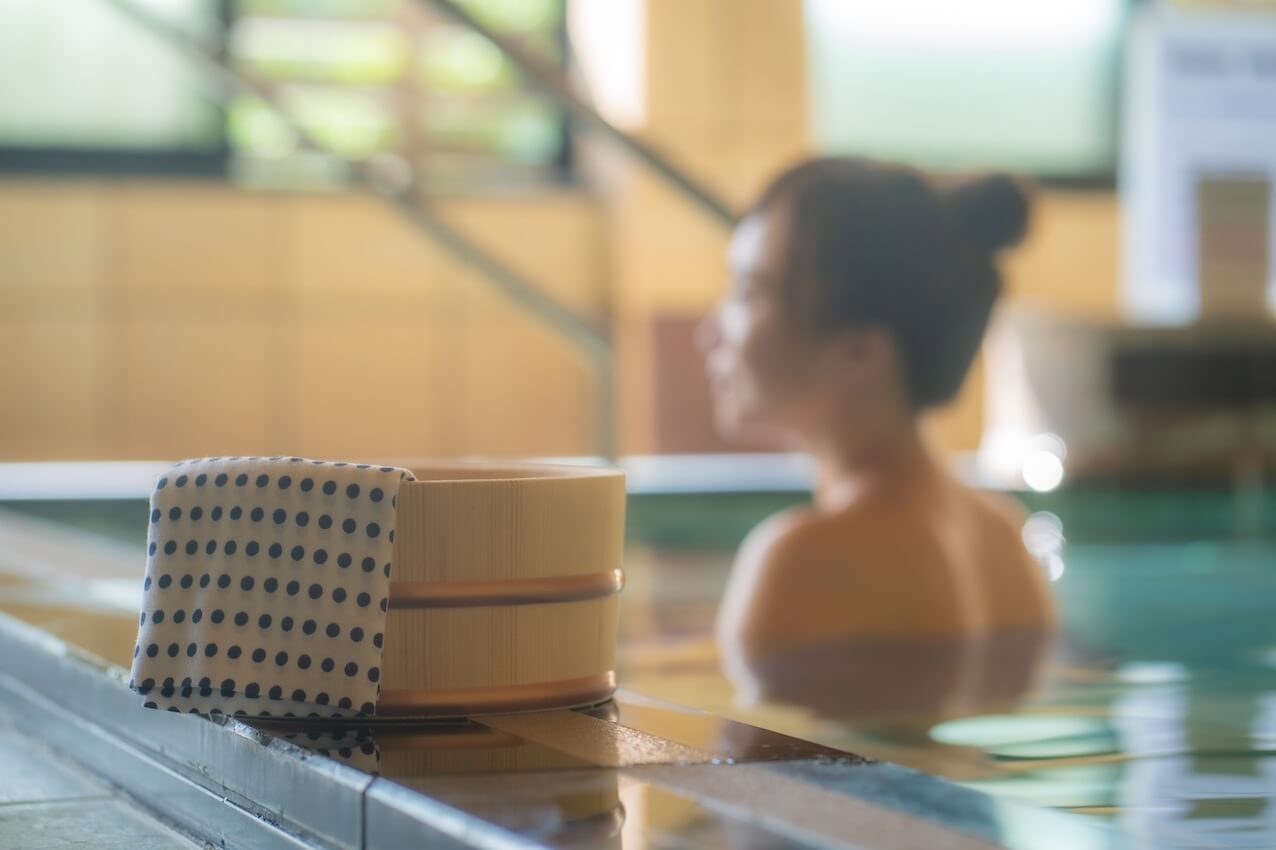
Known as ‘onsen’ in Japanese, natural hot springs play a huge role in life here and there’s no better time and place to enjoy them than during autumn in Nagano. Nagano is home to historic hot spring towns including Yudanaka Onsen, Shibu Onsen, Kanbayashi Onsen, Nozawa Onsen, Bessho Onsen and many others. You’ll have no trouble finding one and once you’ve dipped your toes into onsen culture, you’ll likely find you love it. Enjoyable all year round, the hot springs are perhaps at their most enjoyable in the cooler to colder months of October to March.
Matsushiro Autumn Sanada Clan Jumangoku Festival
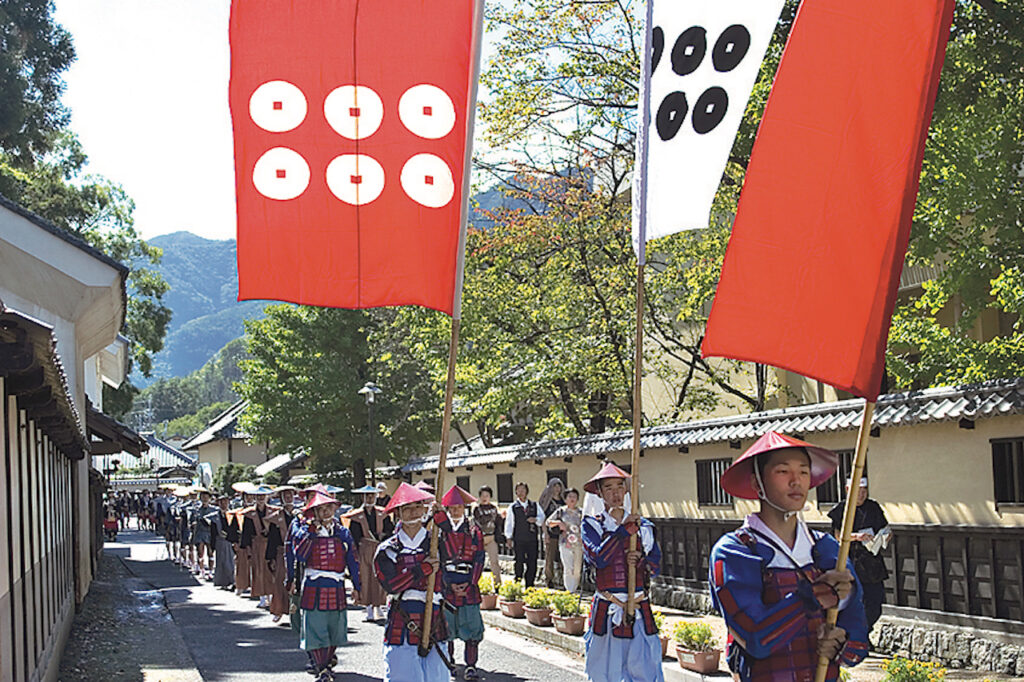
1-Day Samurai Food & Life Tour: Oyaki, Samurai Residences, and Katana Practice
- Spots:
- Pick-up:
- Drop-off:
The Matsushiro Autumn Sanada Clan Jumangoku Festival is an elaborate celebration of Nagano City’s samurai enclave, held over two-days on the second weekend of October. Centred around the grounds of Matsushiro Castle Park, the first day is full of traditional music and dance performances while the festival really comes to life on the second day with a day of traditional artillery displays, taiko and dance performances in the morning, followed by the ceremonial parade of samurai and their attendants in full regalia in the early afternoon. Easy to reach using local bus services from Nagano Station, the festival is not to be missed.
NOVEMBER
Ebisuko Fireworks Festival
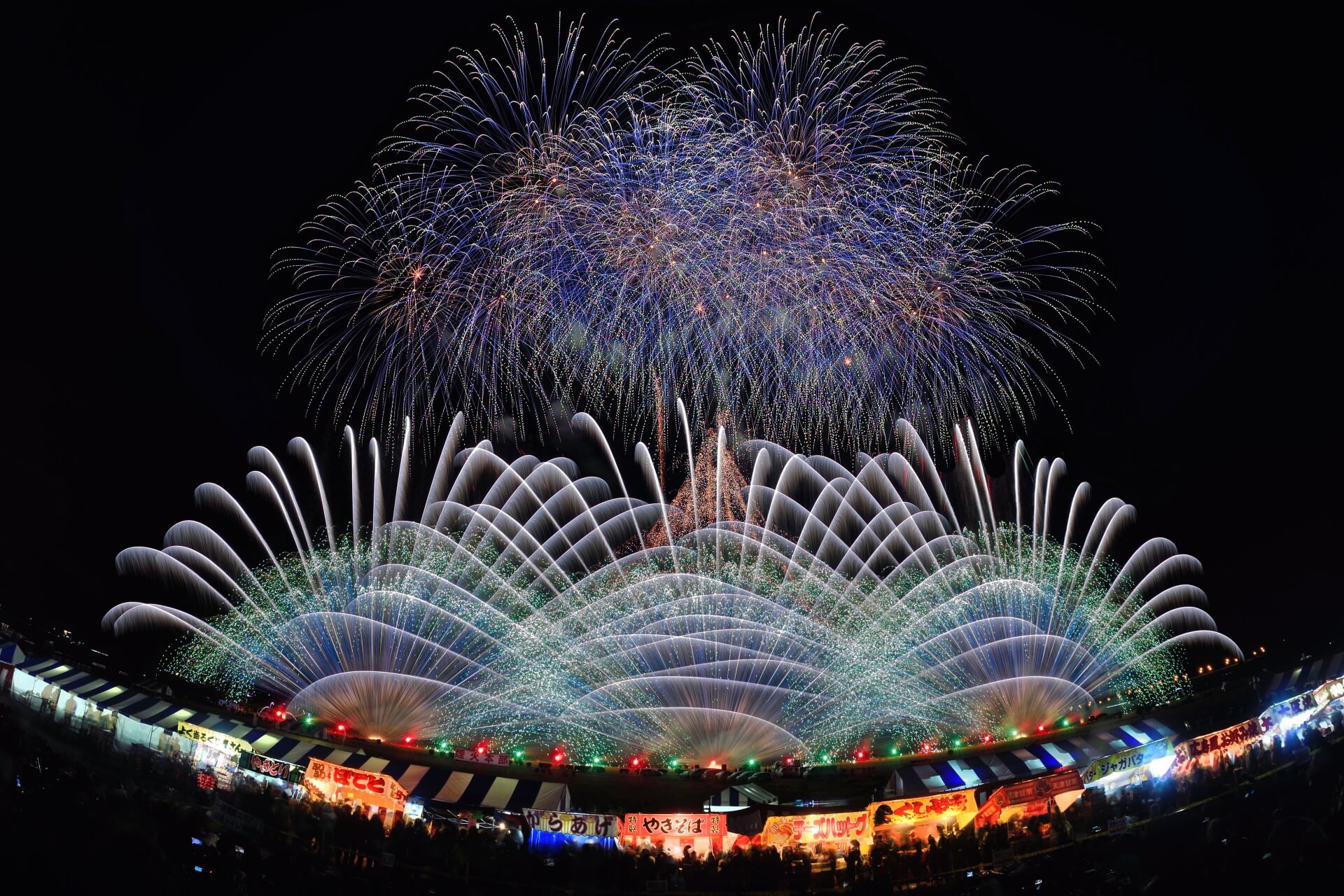
[NOV 23 ONLY] 1-Day Tour: Ebisu-ko Fireworks Festival & Snow Monkeys
- Spots:
- Pick-up:
- Drop-off:
Held on November 23rd, Nagano’s Ebisu-ko Fireworks Festival is the largest autumn fireworks display in Japan. Dating back to 1899, the display was first held in gratitude to Ebisu – one of Japan’s seven lucky gods – and in prayer and thanks for a prosperous business harvest. Today, the fireworks attract more than 400,000 spectators – a stunning display that can be enjoyed from the comfort of reserved seating on our 1-Day Ebisu-ko Fireworks Festival & Snow Monkeys Tour.
DECEMBER
Zenko-ji Illumination Festival
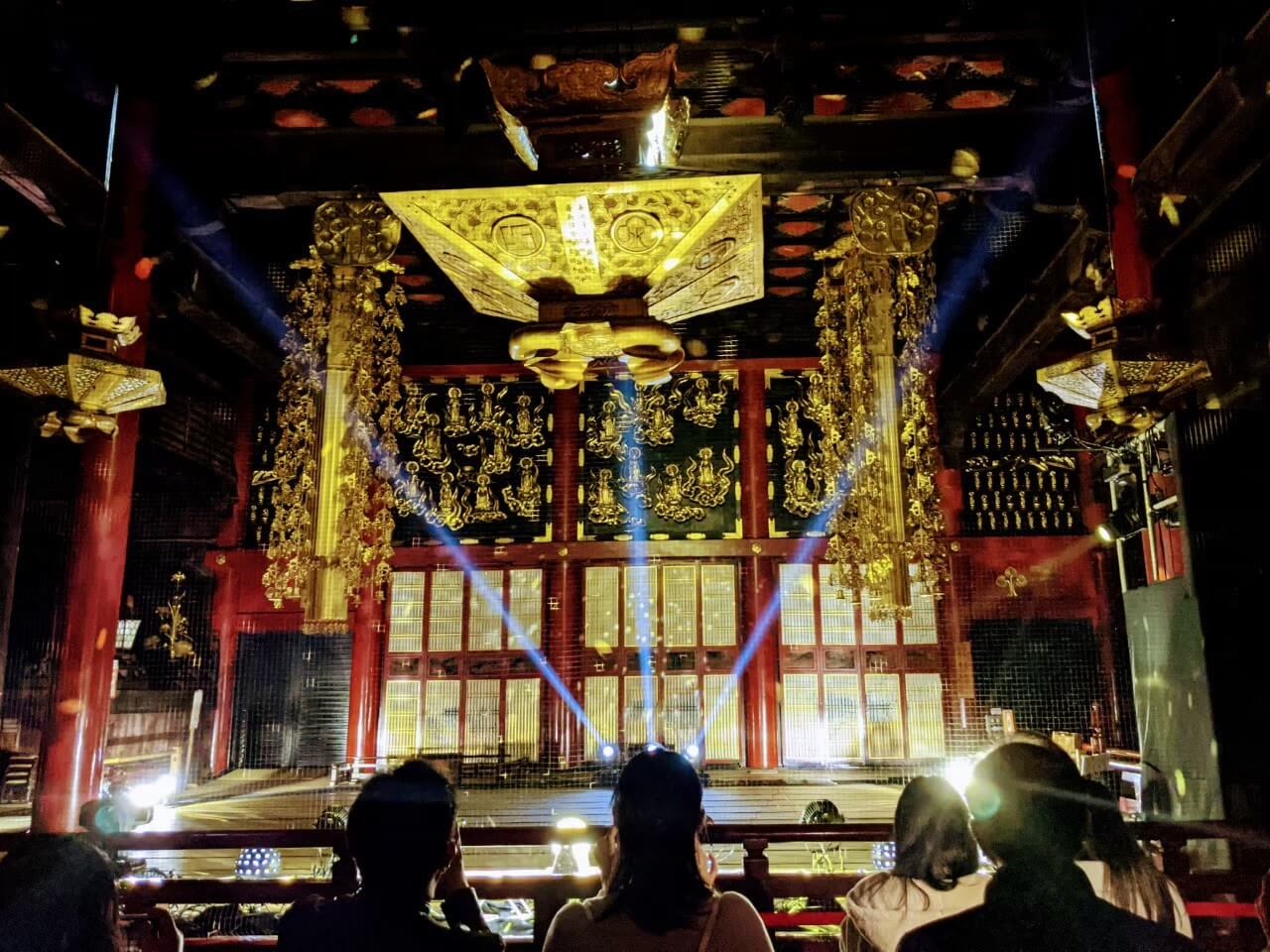
*Please note that as of 2024, while the street illumination will be continued for the same time period, the illumination inside of the temple itself has been canceled for the foreseeable future.
Established in 642, Zenko-ji Temple is the spiritual and physical heart from which Nagano City grew. The road leading to the temple, known as the Omotesando or ‘Pilgrims Path’ now connects the city’s main train station to the temple and through winter each year bursts into light with the Zenko-ji Omotesando Illumination. From early-November until mid-February, the Omotesando will be illuminated, creating an avenue of light leading to the temple; followed by the main event, the illumination of the temple precinct from mid-December with lighting and projections transforming the temple into an imagined Buddhist paradise – an ephemeral world of purple and violet, silver and golden light. The Omotesando is lit from sundown while the temple is illuminated from around 17:30 to 20:00. Admission is free.
Toyamago Shimotsuki Festival
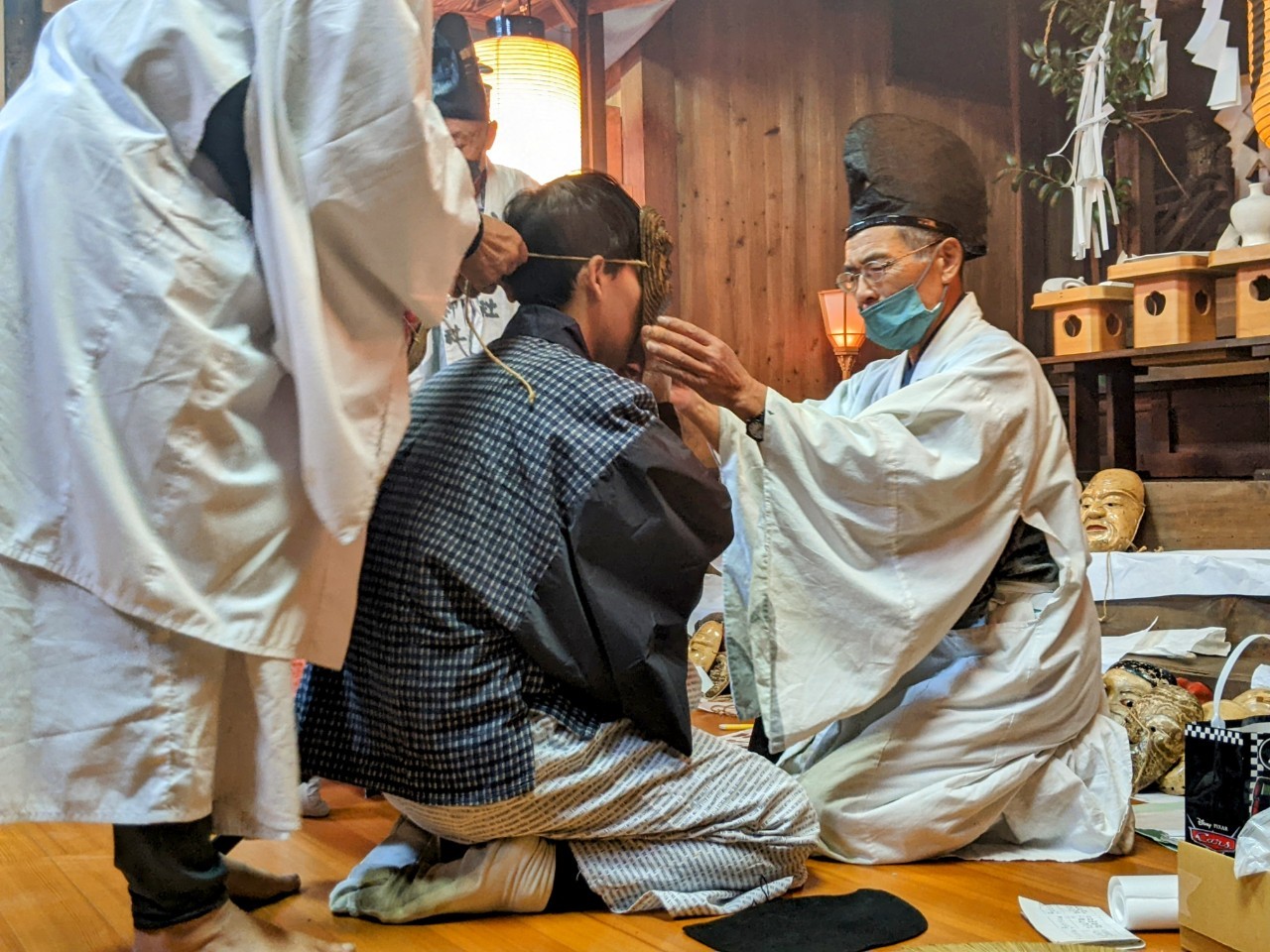
Lying around 3 hours to the south of Nagano and 4 hours to the west of Tokyo, Toyamago is a beautiful yet hidden enclave of the Tenryu Riverlands. Undiscovered by international visitors, this is a region of Japan rarely seen – a beautiful landscape of high mountains, thick forest and the winding Tenryu River. Toyamago is also known as a place of spirits, a belief and tradition that is celebrated each December during its Shimotsuki Festival. Taking place over multiple weeks, the festival moves through local villages, centred around the shrines of each and invoking the spirits to come and dance. It culminates with the largest of those festivals around December 18 – date may vary by year – in which 42 spirits are invoked and welcomed into a local shrine by residents wearing their masks and dancing around water heated over an open fire. Regularly sprayed onto the crowd by the most boisterous of dancers, the ceremony is also seen as an act of purification and a true spectacle for anyone who can get there.
Snow Monkeys in the Snow!
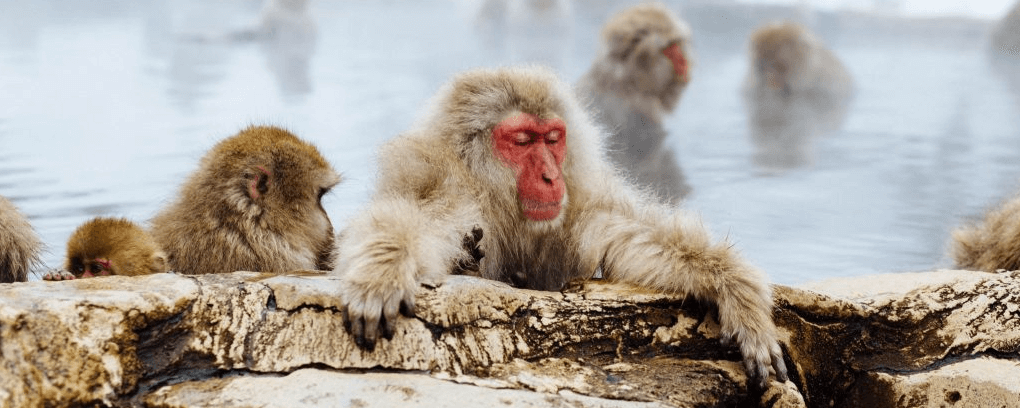
While the monkeys come to the park all-year-round, the name ‘Snow Monkeys’ is a fairly big indication that they are most famous for their winter antics, including their ability to thrive in the deep cold and snow. The first snow typically falls in the park around mid-December with heavier snows to follow and the heaviest snowfall in January and into February. It’s around this time that you’re also most likely to see the monkeys dip in their hot spring, which on the coldest days can involve dozens of monkeys huddled together in the warm thermal water. A bit of a must-do when visiting Nagano in winter.
Back to where we started... World-class Skiing & Snowboarding
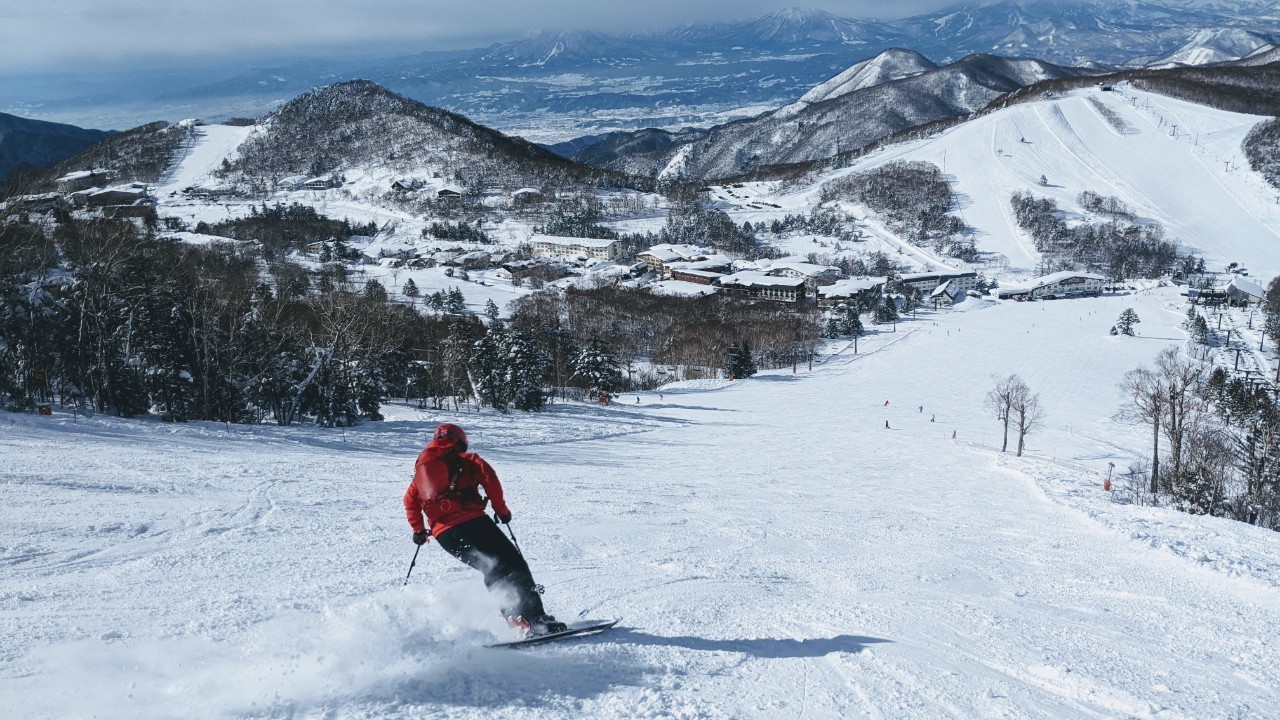
Around the same time, Nagano’s ski resorts will open. Home to the greatest number of ski resorts of any region of Japan, Nagano offers visitors world-class skiing and snowboarding in resorts including Shiga Kogen, Nozawa Onsen, Madarao, Hakuba Valley and the nearby resorts of Myoko Kogen (actually located in Niigata but typically grouped with the Hakuba resort). Our ‘Best Resorts in Nagano’ page is a great place to start when planning your next winter to getaway… we hope to see you here this winter!
BEST PLACES TO STAY IN NAGANO
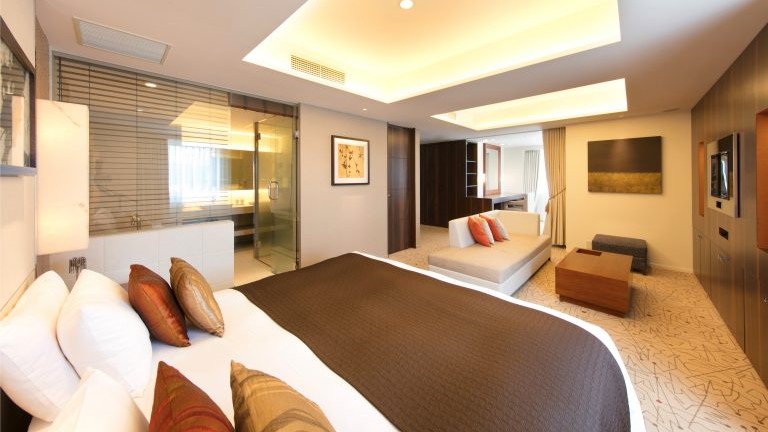
We hope the above list of the best events, festivals and seasonal activities in Nagano has piqued your interest and you’ll soon be visiting us. When you do so, choosing the best place to stay is of course hugely important; after all, Nagano is a large area with a huge range of accommodation options spread throughout. Our ‘Best Places to Stay in Nagano’ page has our suggestions of the best areas to stay while here and links to accommodation listings.
TOURS AND CHARTERS AROUND NAGANO
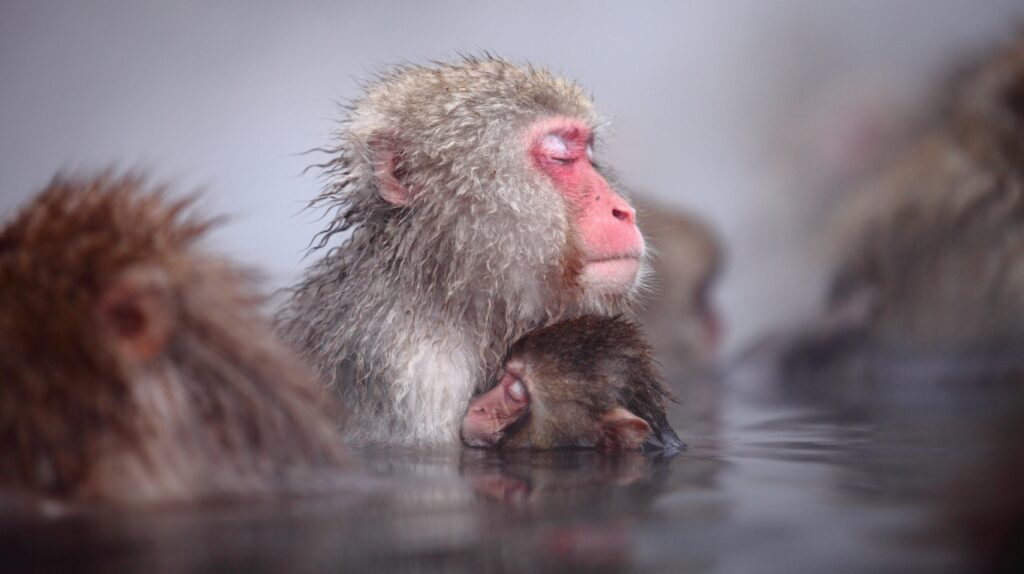
As Nagano's No.1 tour operator, we are proud to offer multiple tours around the Nagano area, including visits to such famous attractions as the Snow Monkey Park and the Nakasendo Trail. No matter the season, we can help you make the most of your time in Nagano. Whether with your family or friends, or on your own, we are sure to have something that suits your needs!
Our most popular offering is our "1-Day Tour: Snow Monkey Park, Zenkoji Temple and Sake in Nagano". Guests on this delightful excursion will first be treated to Sake Tasting and a guided tour of the historic Zenkoji Temple in Nagano, including lunch at a nearby restaurant.
With the first half of the tour complete, you will then depart for the Monkey Park on our private tour vehicle. Once you have arrived your guide will lead the way up to the place the Monkeys call home, before you once again board the bus and return to your starting destination.
For those guests coming in the Winter, we also offer the "1-Day Tour: Snow Monkeys & Snow Fun in Shiga Kogen", combining exciting snow activities such as sledding and riding snow scoots with a visit to the Monkey Park. Lunch is also included, making for the perfect day trip for anyone looking to experience what winter in Nagano is all about!
Best Selling
1-Day Tour from Nagano and Matsumoto: Kamikochi & Matsumoto Castle
- Spots:
- Pick-up:
- Drop-off:
If the beautiful nature of Nagano is beckoning to you, why not answer its call and join our tour of the Japanese Alps? Considered one of the most scenic spots in Japan, Kamikochi is an alpine valley at 1,500 meters elevation, sitting in the middle of the Chubu-Sangaku National Park. Blessed with clear water and abundant wildlife, this tour operates from April to November and is sure to impress you no matter which season you visit during.
1-Day Tour from Nagano and Matsumoto: Step into the Past on the Nakasendo
- Spots:
- Pick-up:
- Drop-off:
The Nakasendo Trail was once one of the primary roadways in Japan, transporting millions of people throughout its life as a central government backed road under the auspice of the Shoguns. Now, it is quieter but still draws visitors looking for a nice hike through beautiful countryside. Lining the way are several well preserved post towns, once the centers of administration and service on the roads, always filled with inns and eateries to cater to the crowds. With your friendly guide at hand, you will be shown the best way to enjoy the trail while learning all about its storied history.
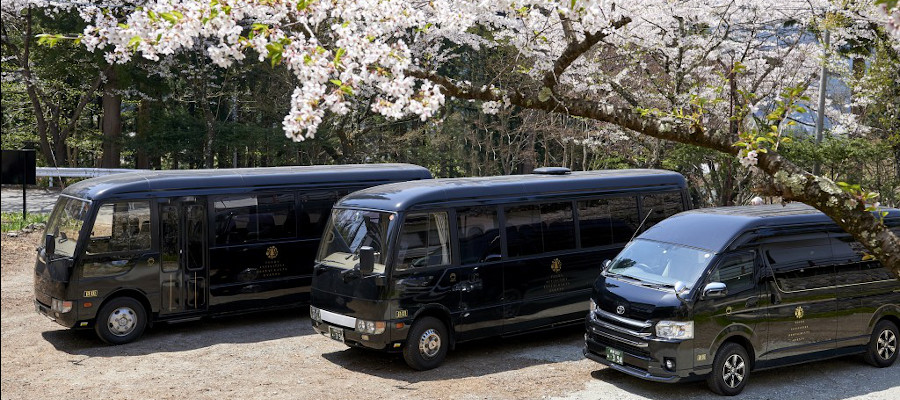
For those interested in private charter services, we would be pleased to provide a vehicle and propose an itinerary to suite your needs! Please see our charter page and send us your trip details so we can can start planning your journey together.














